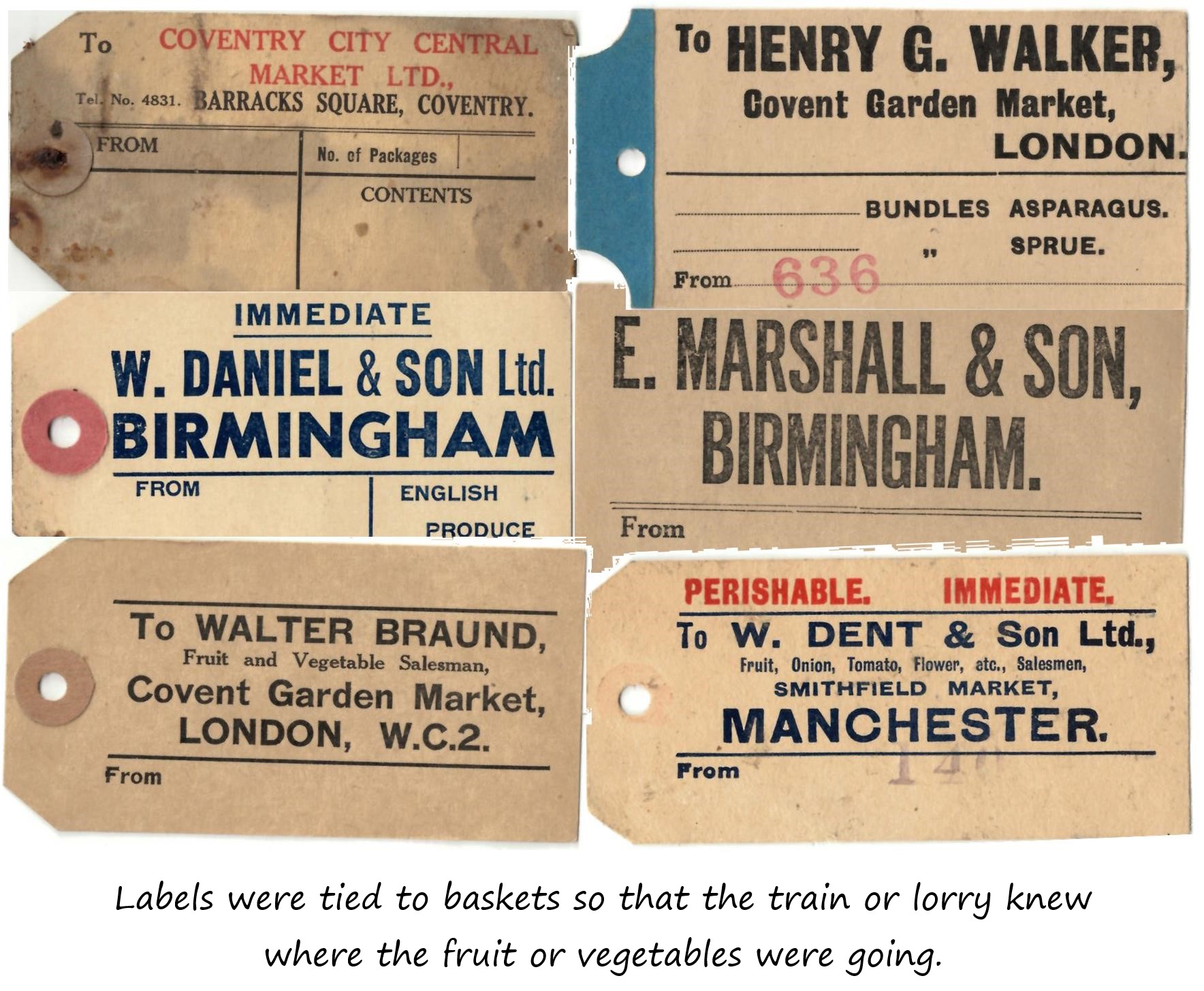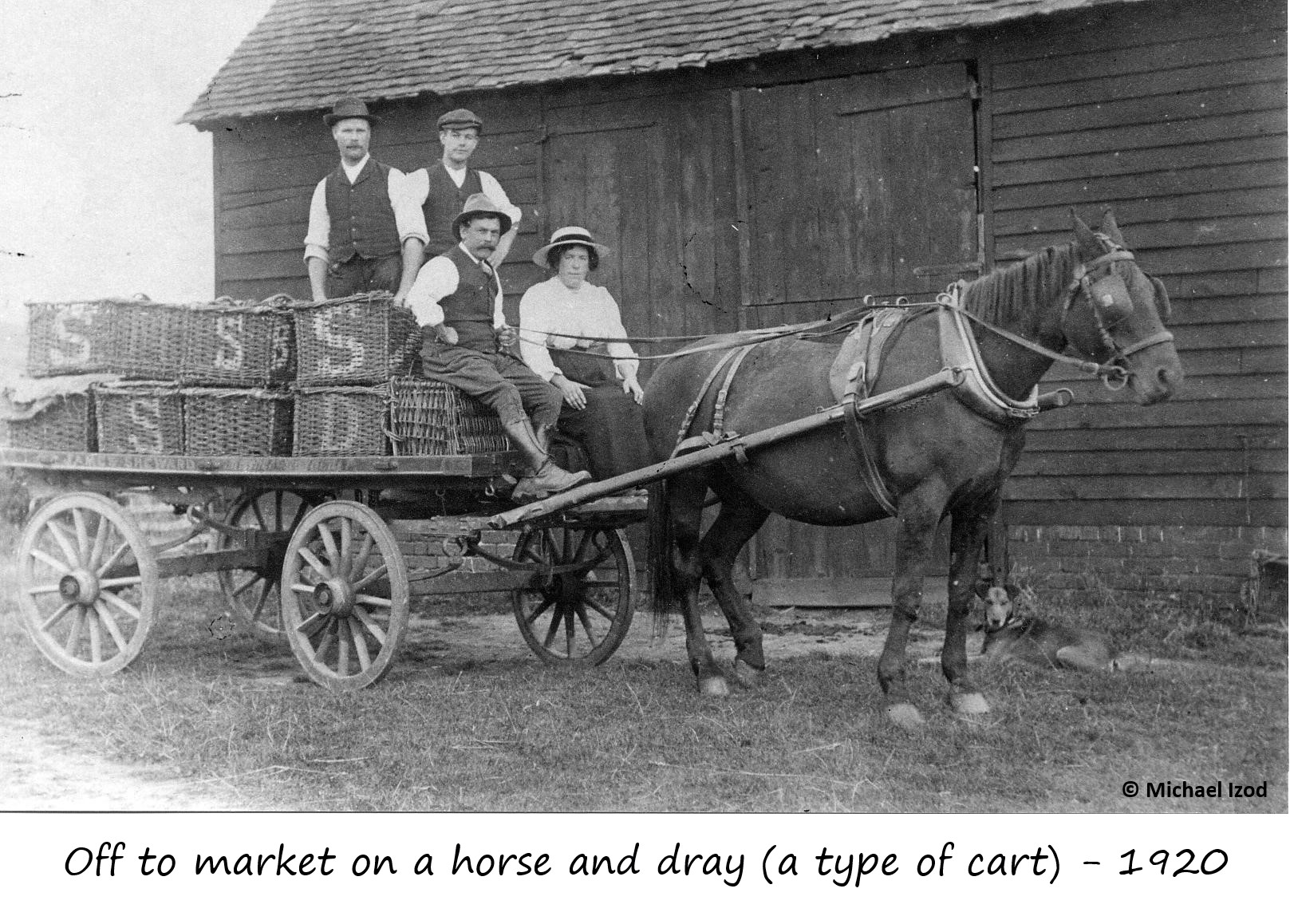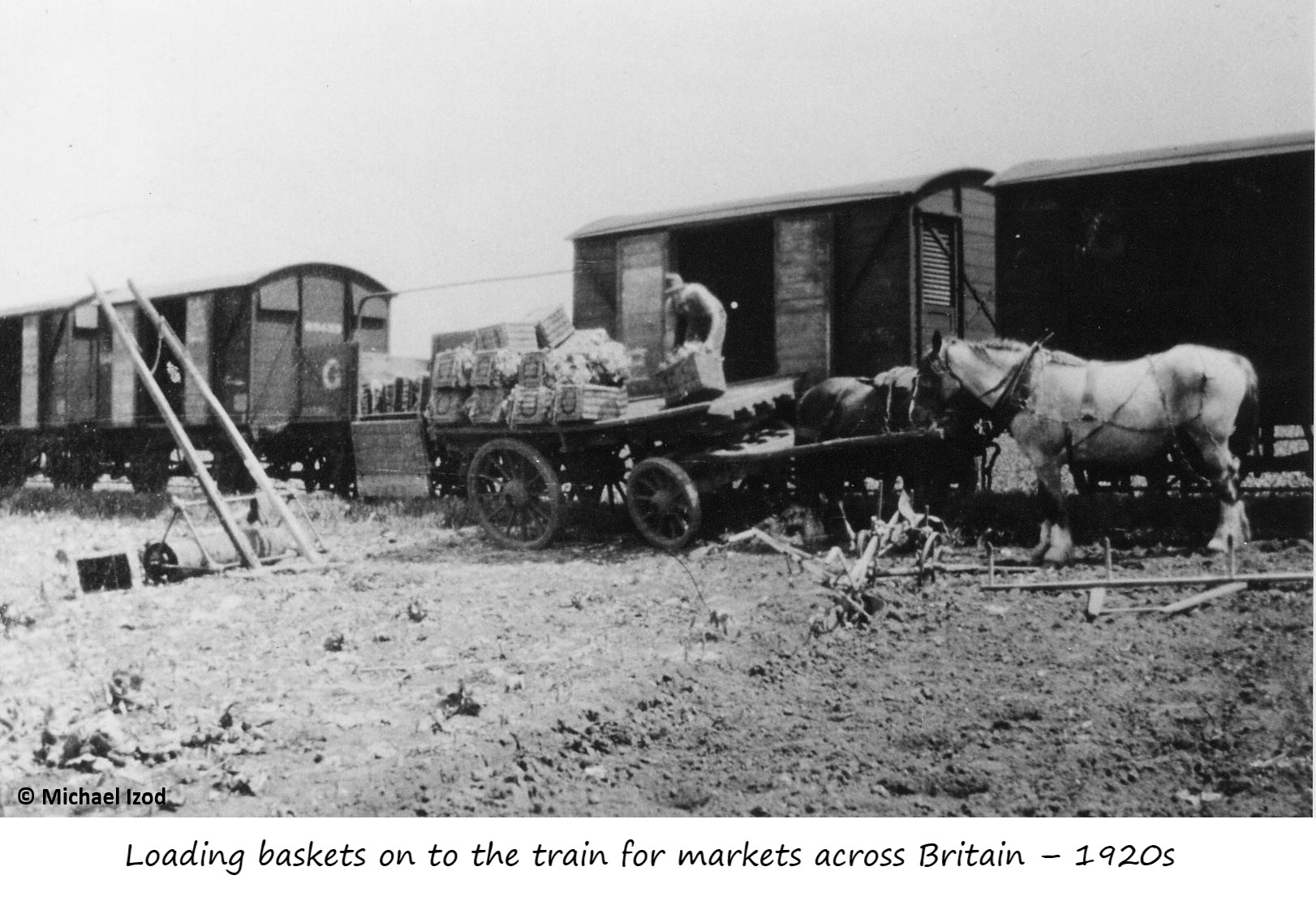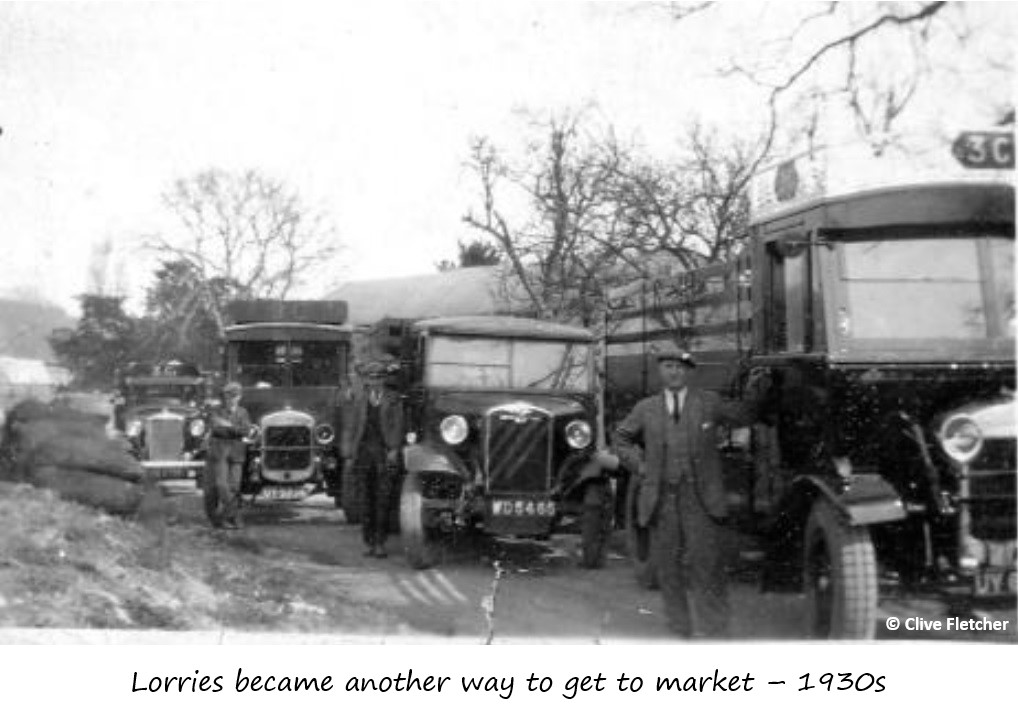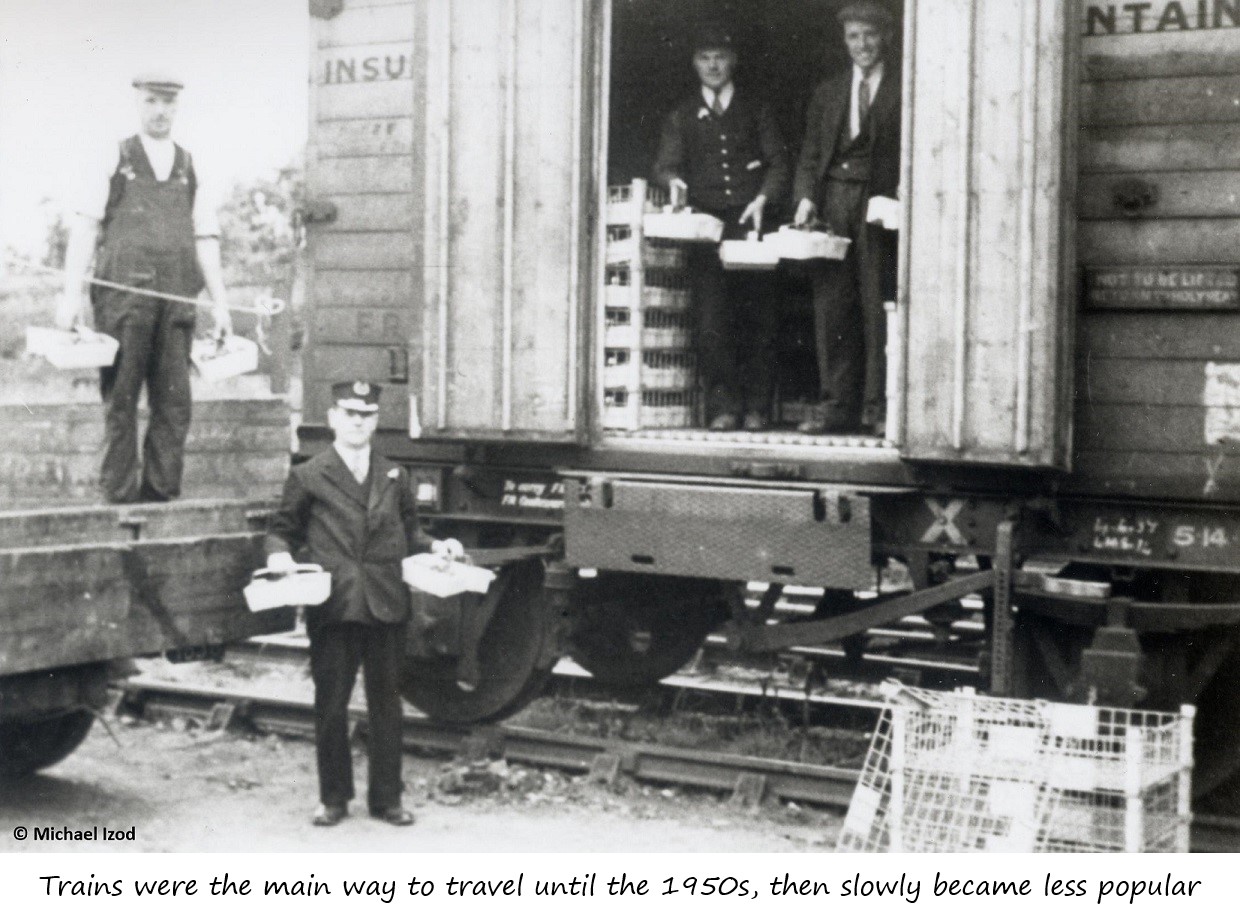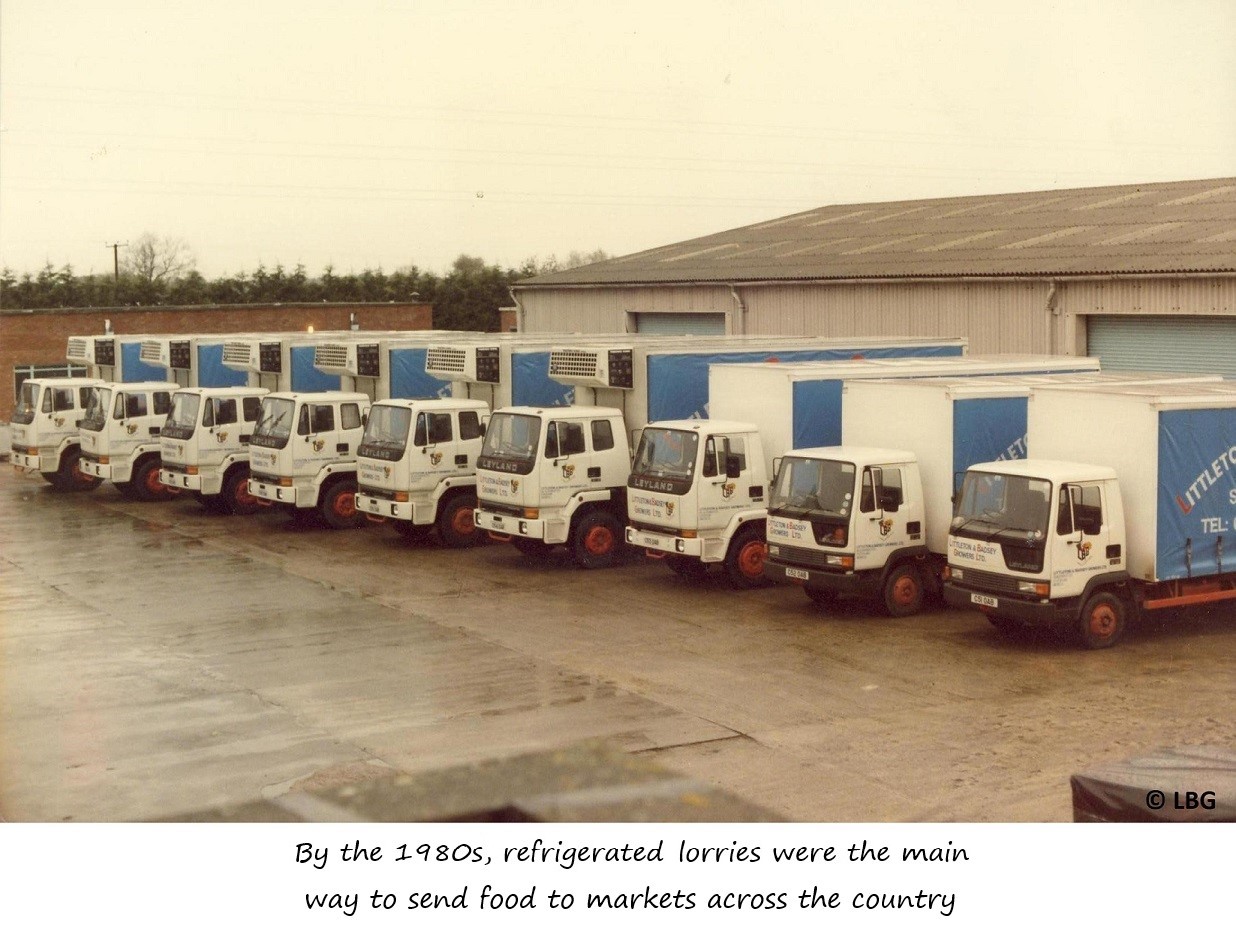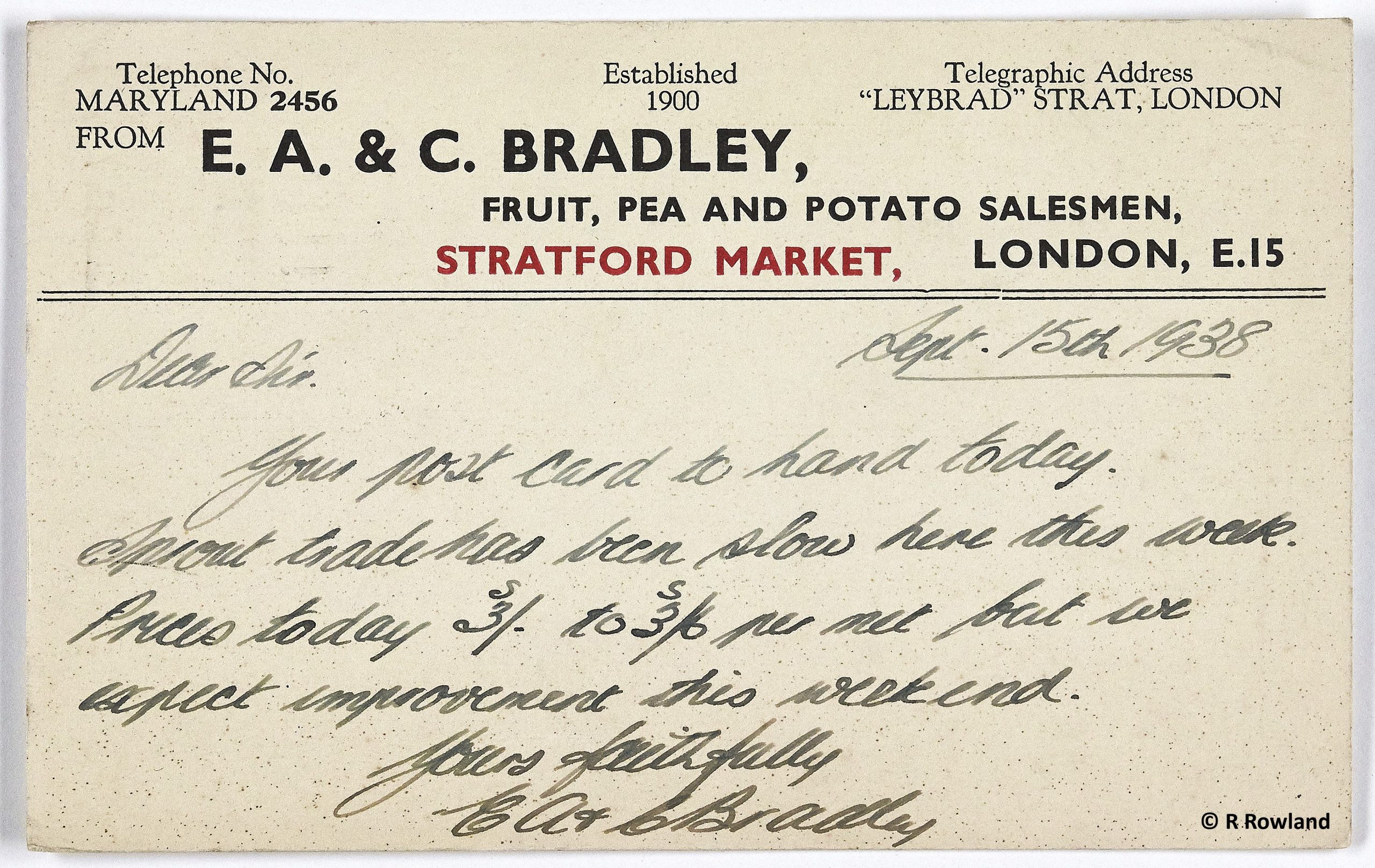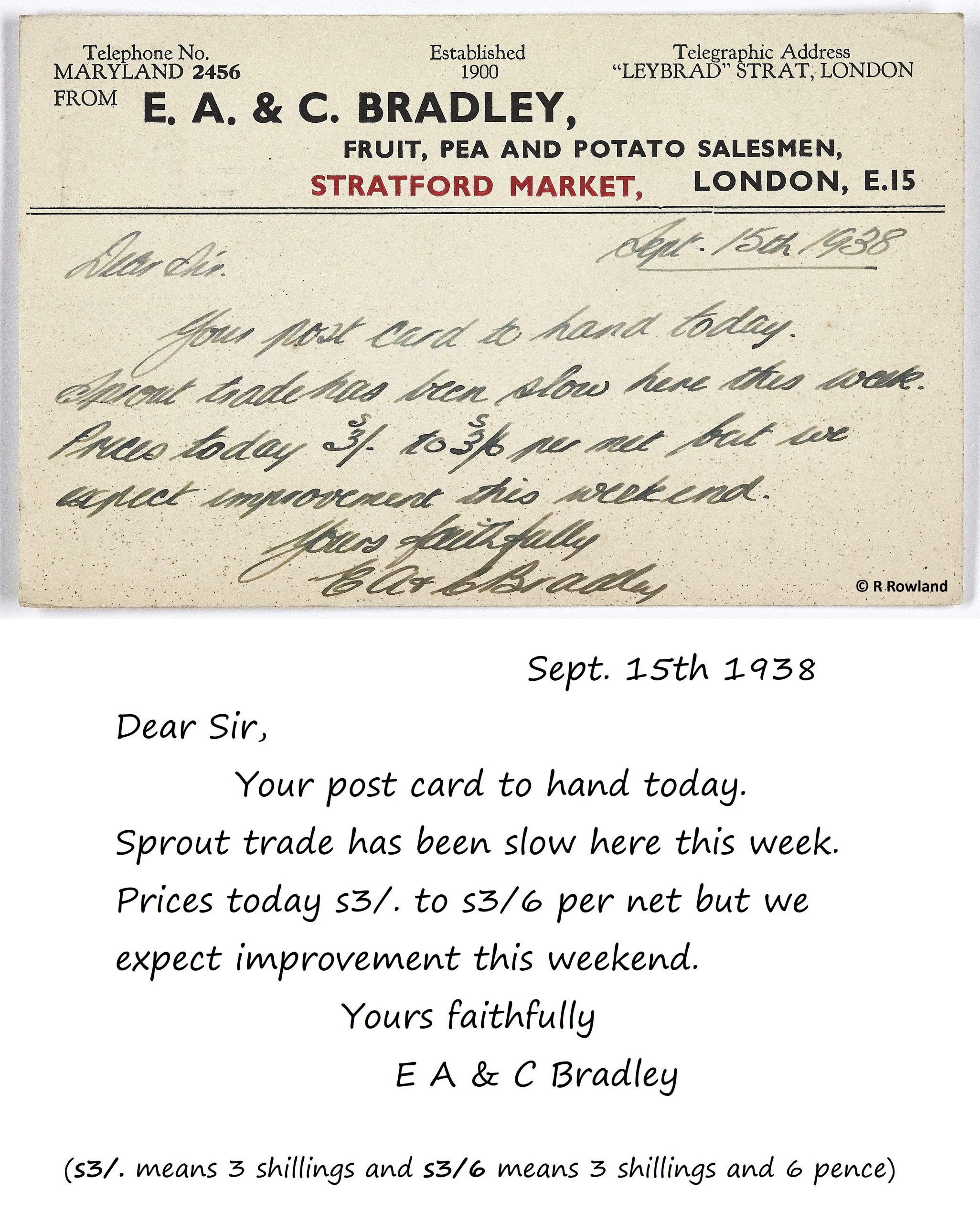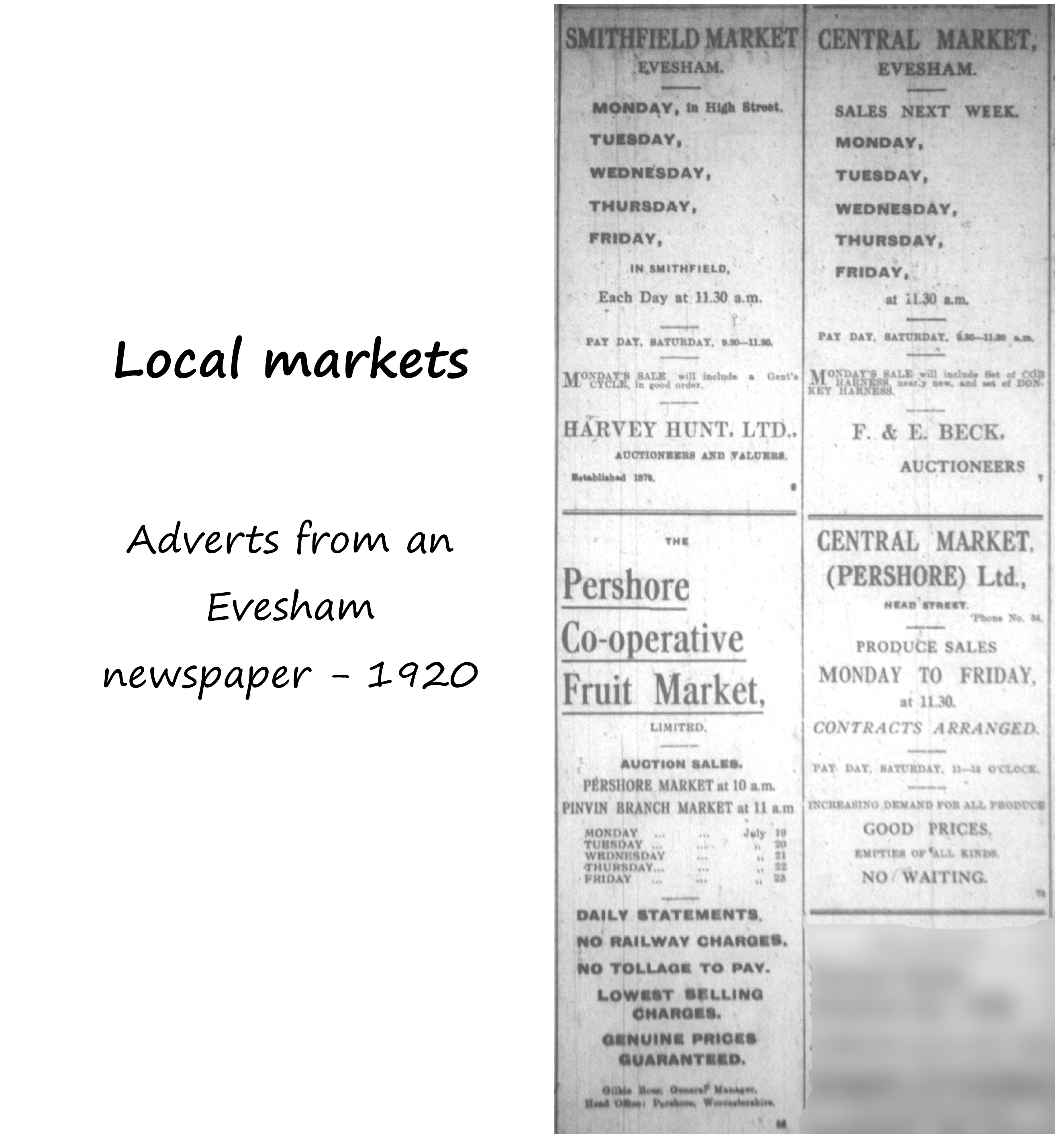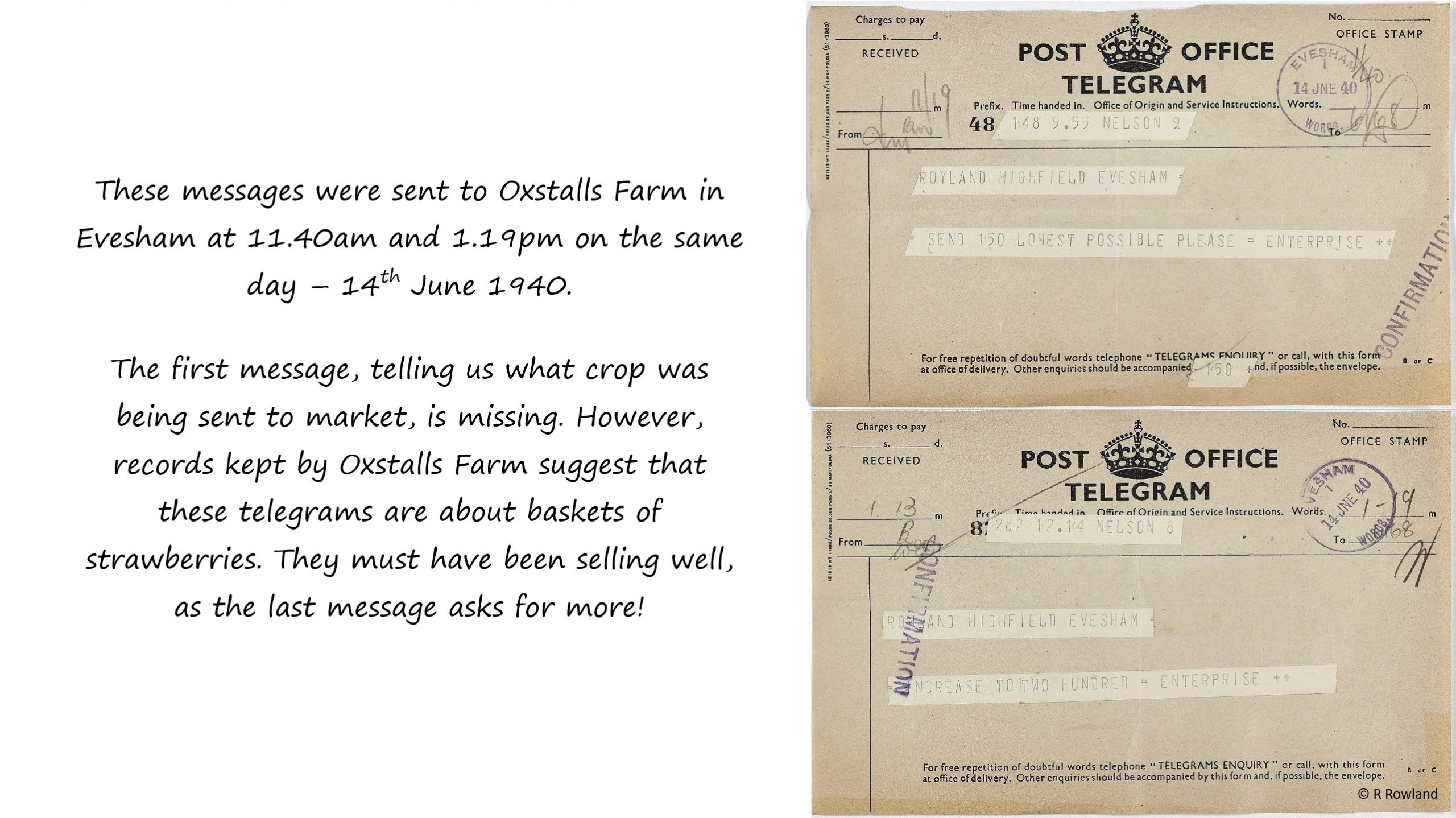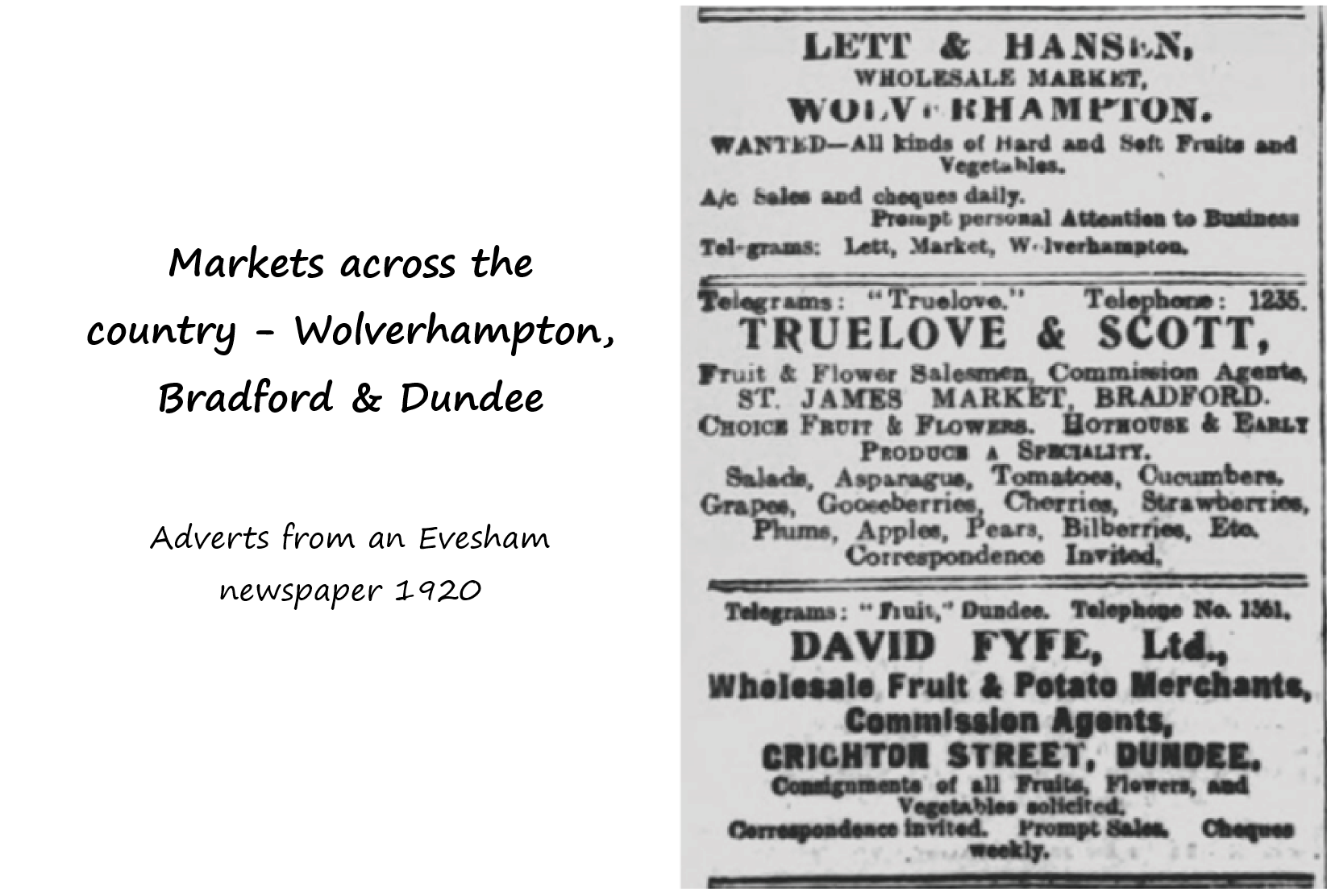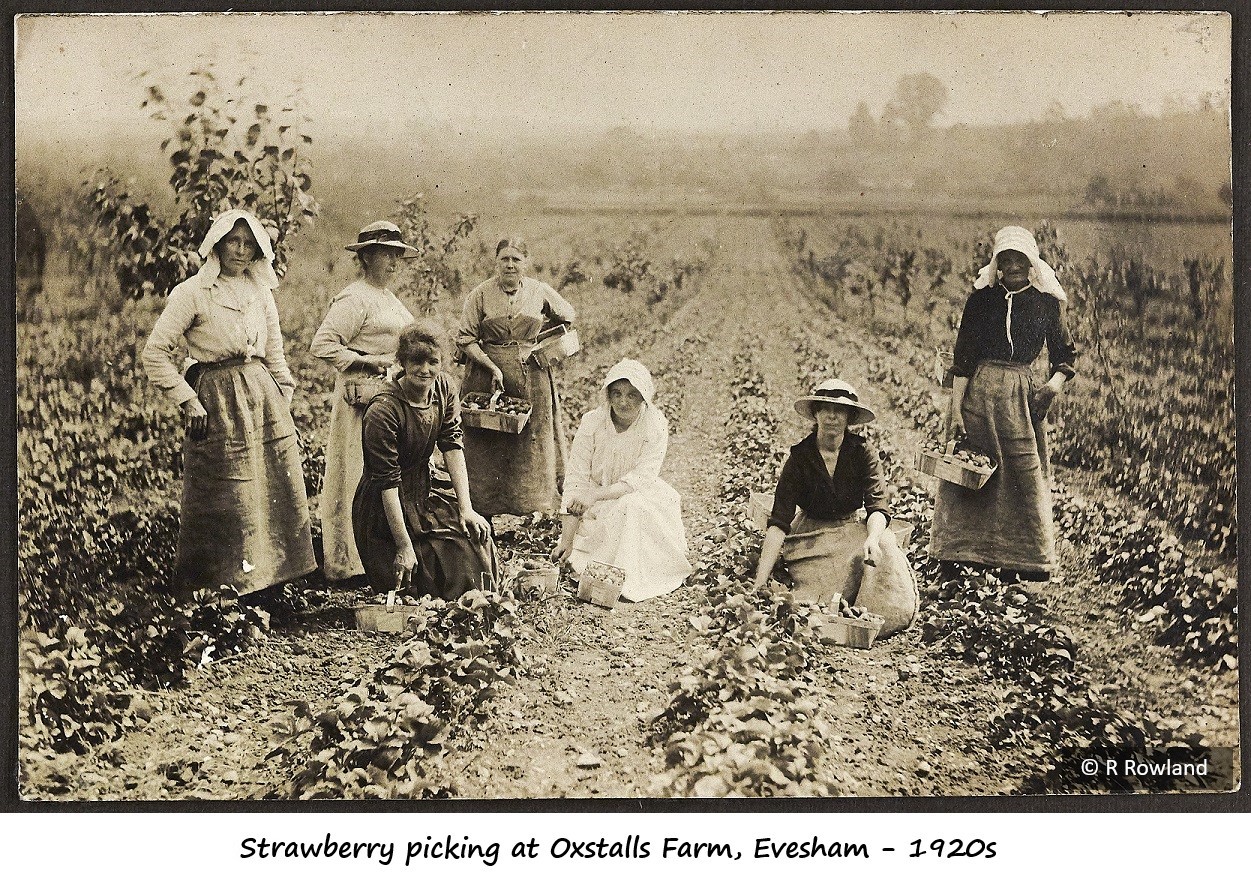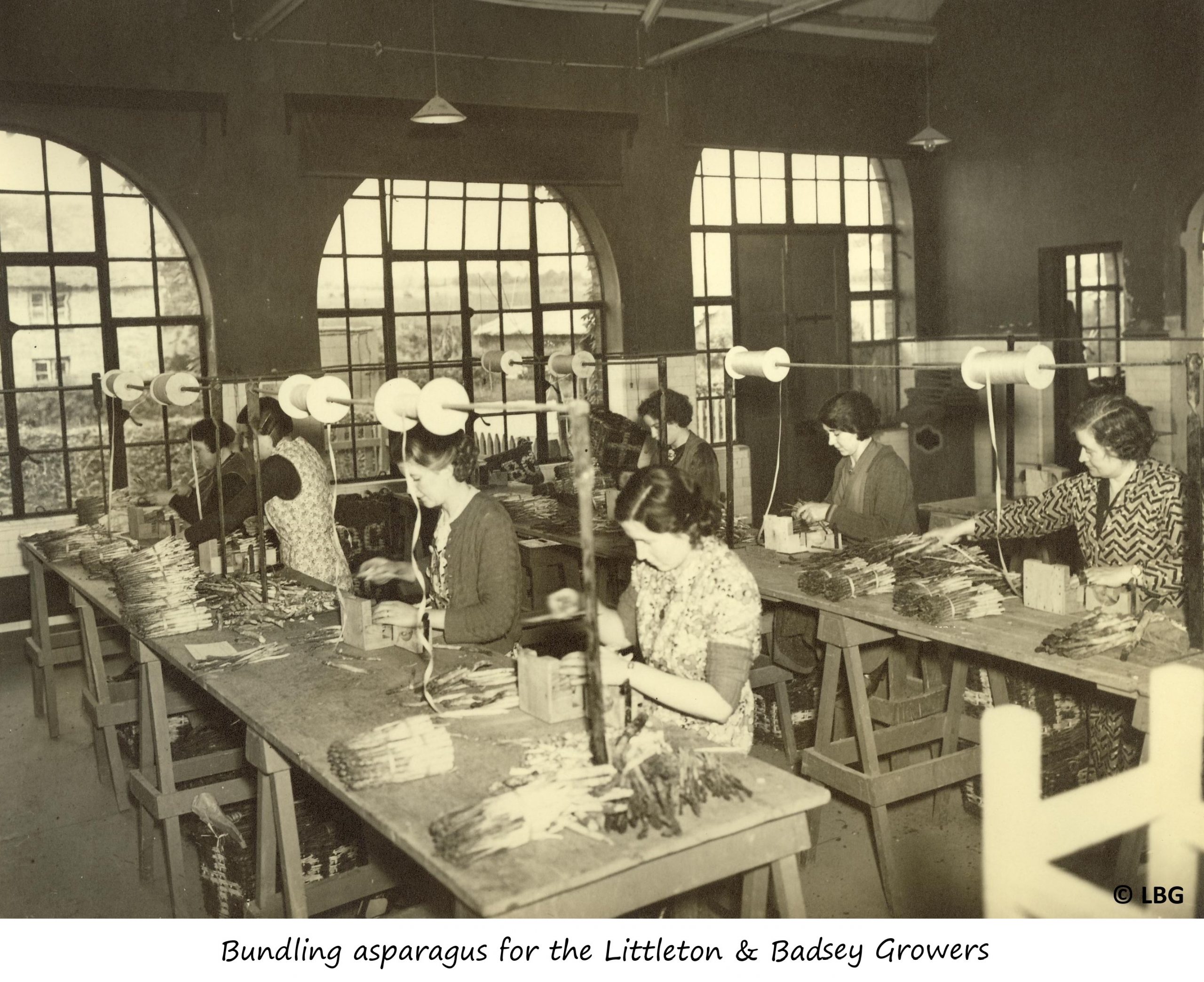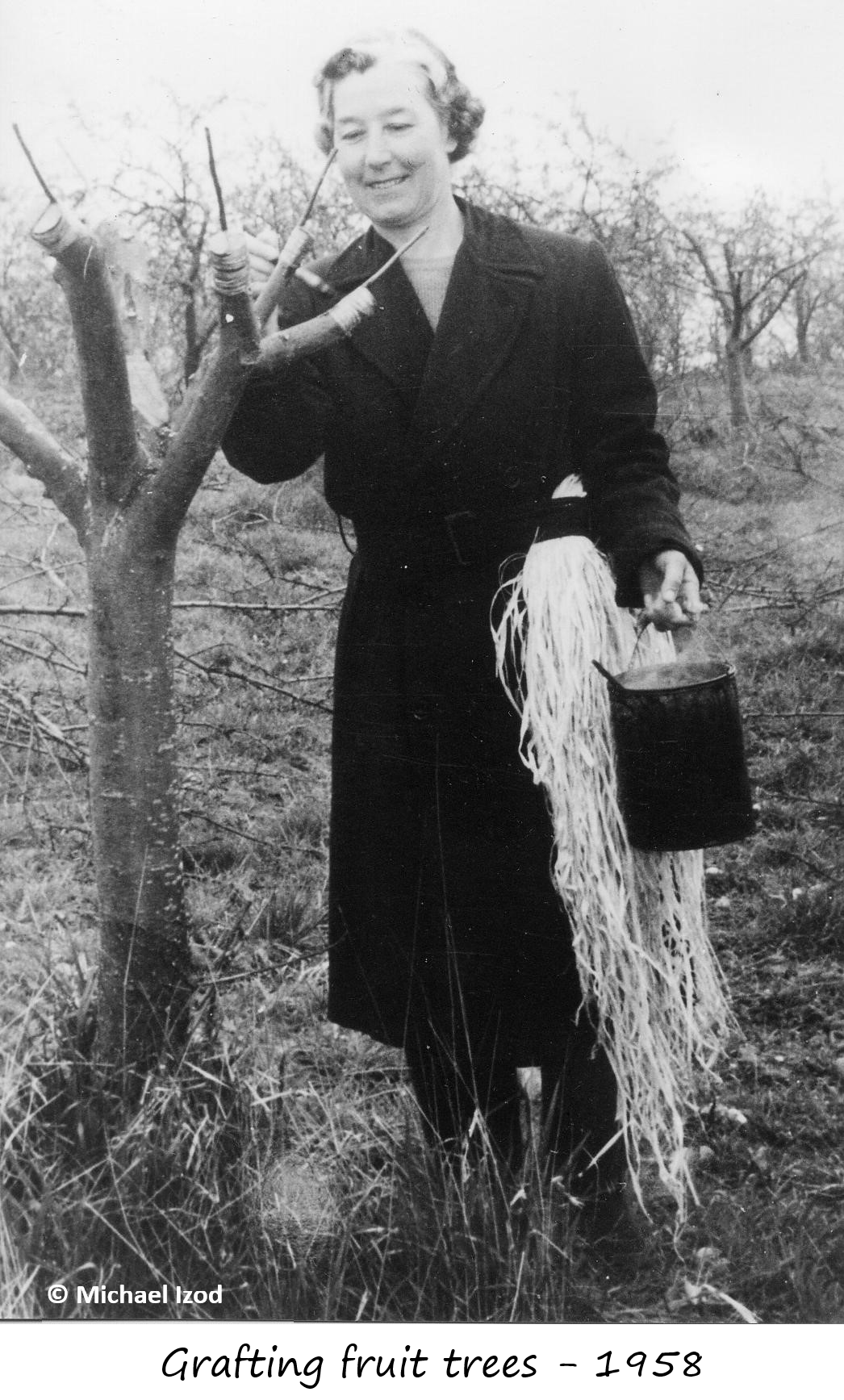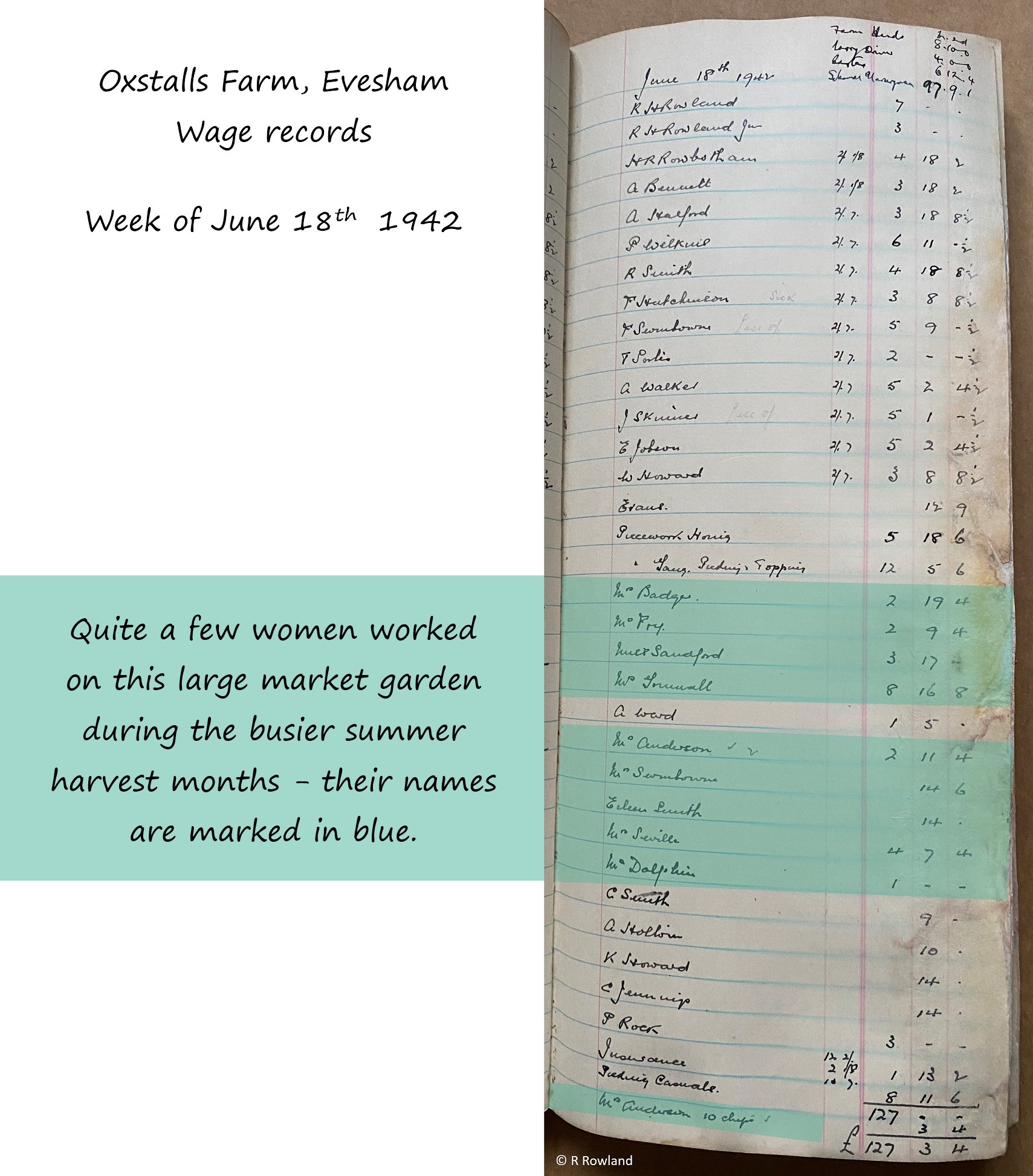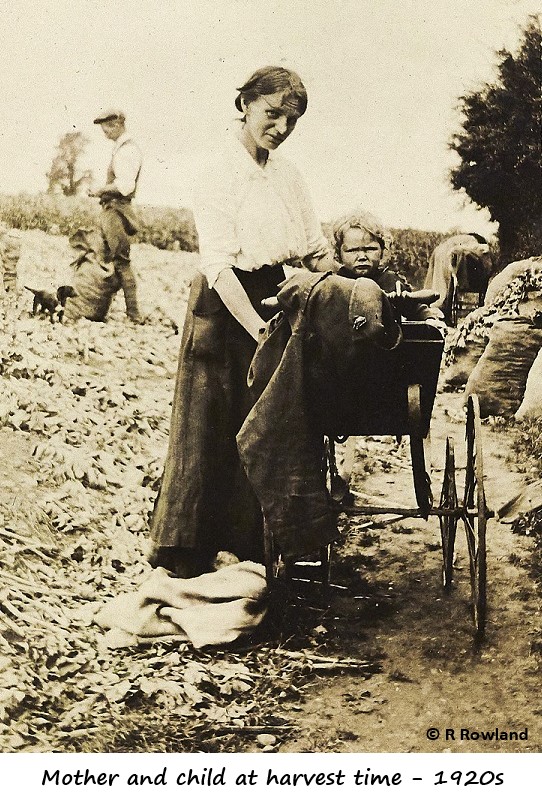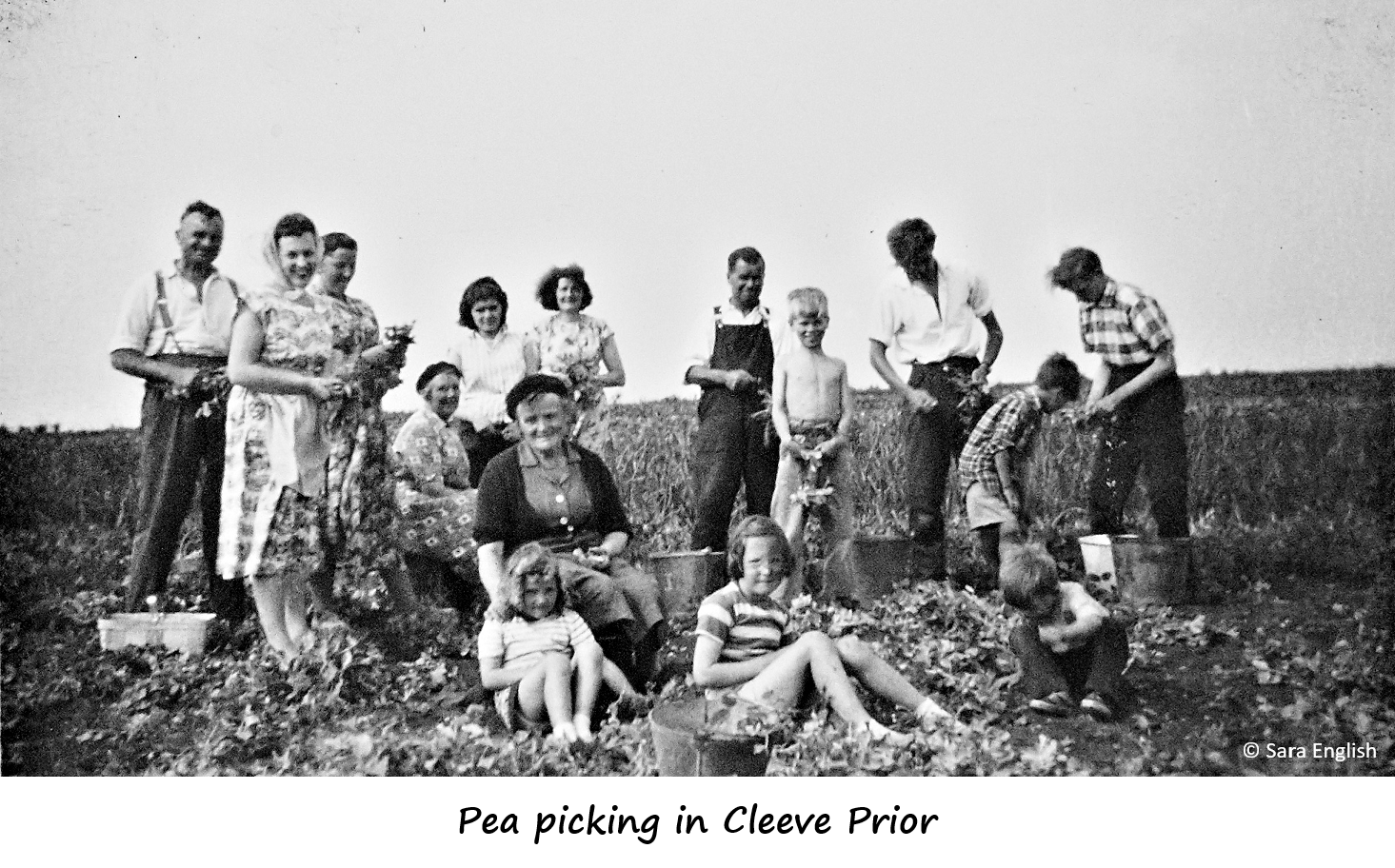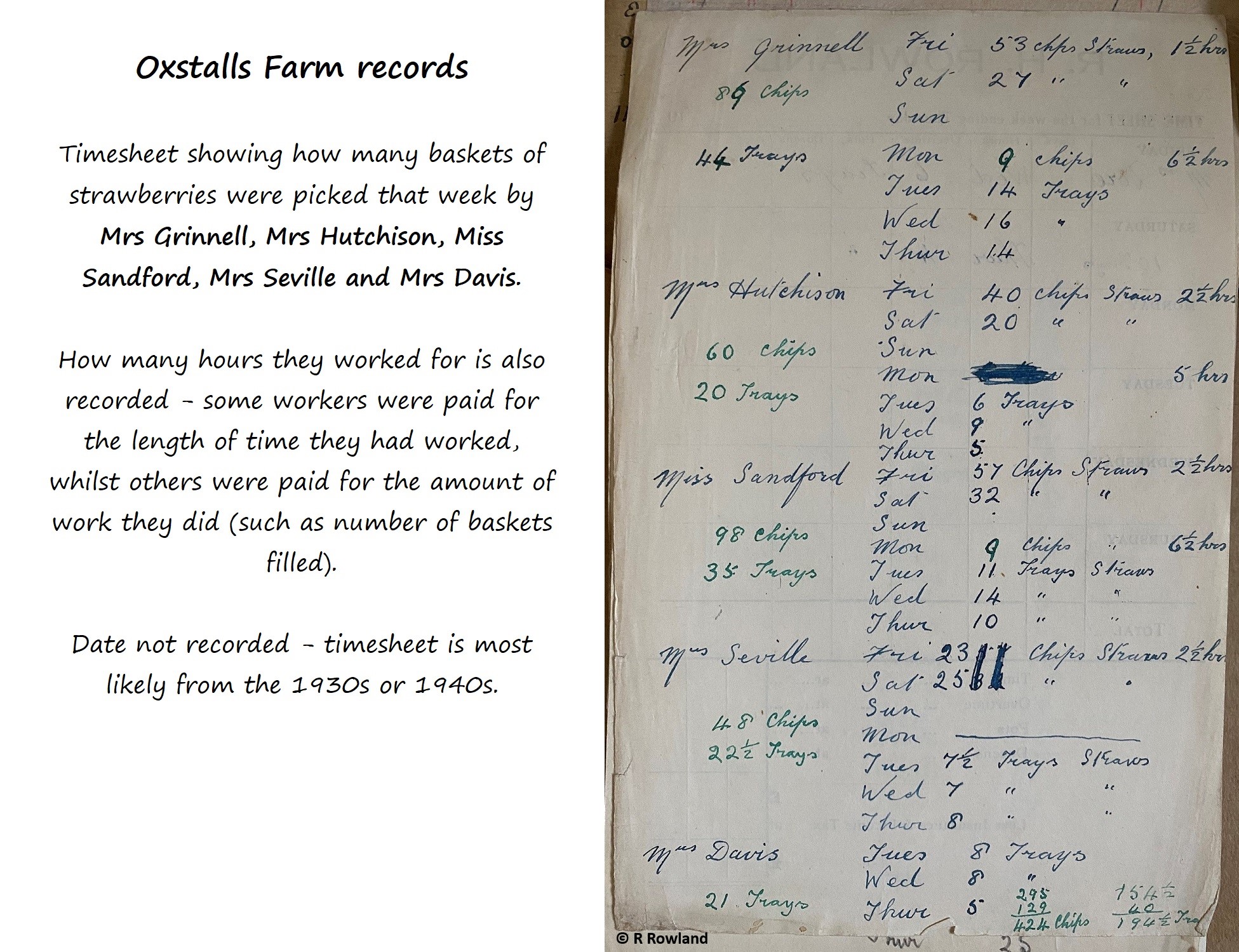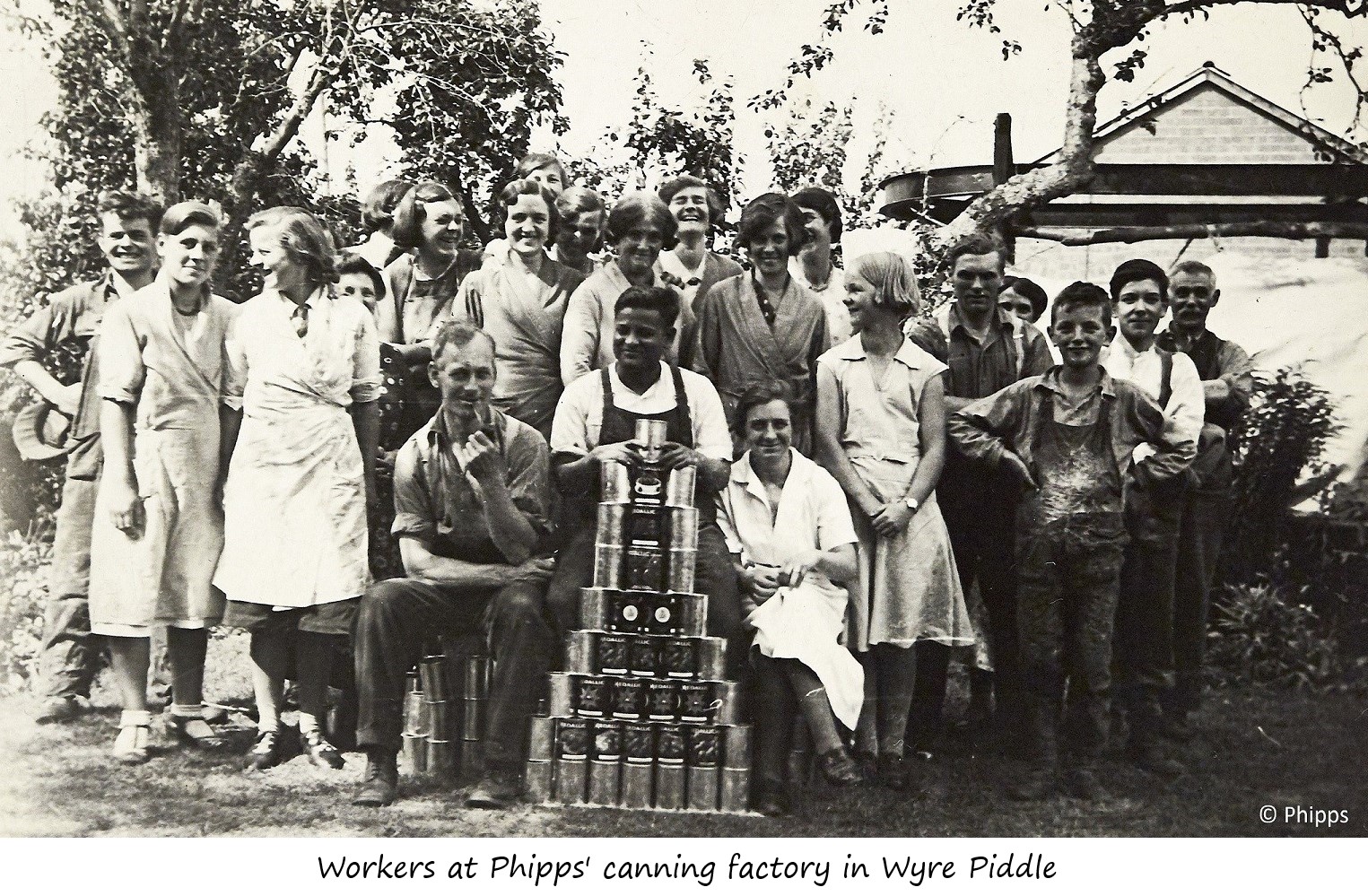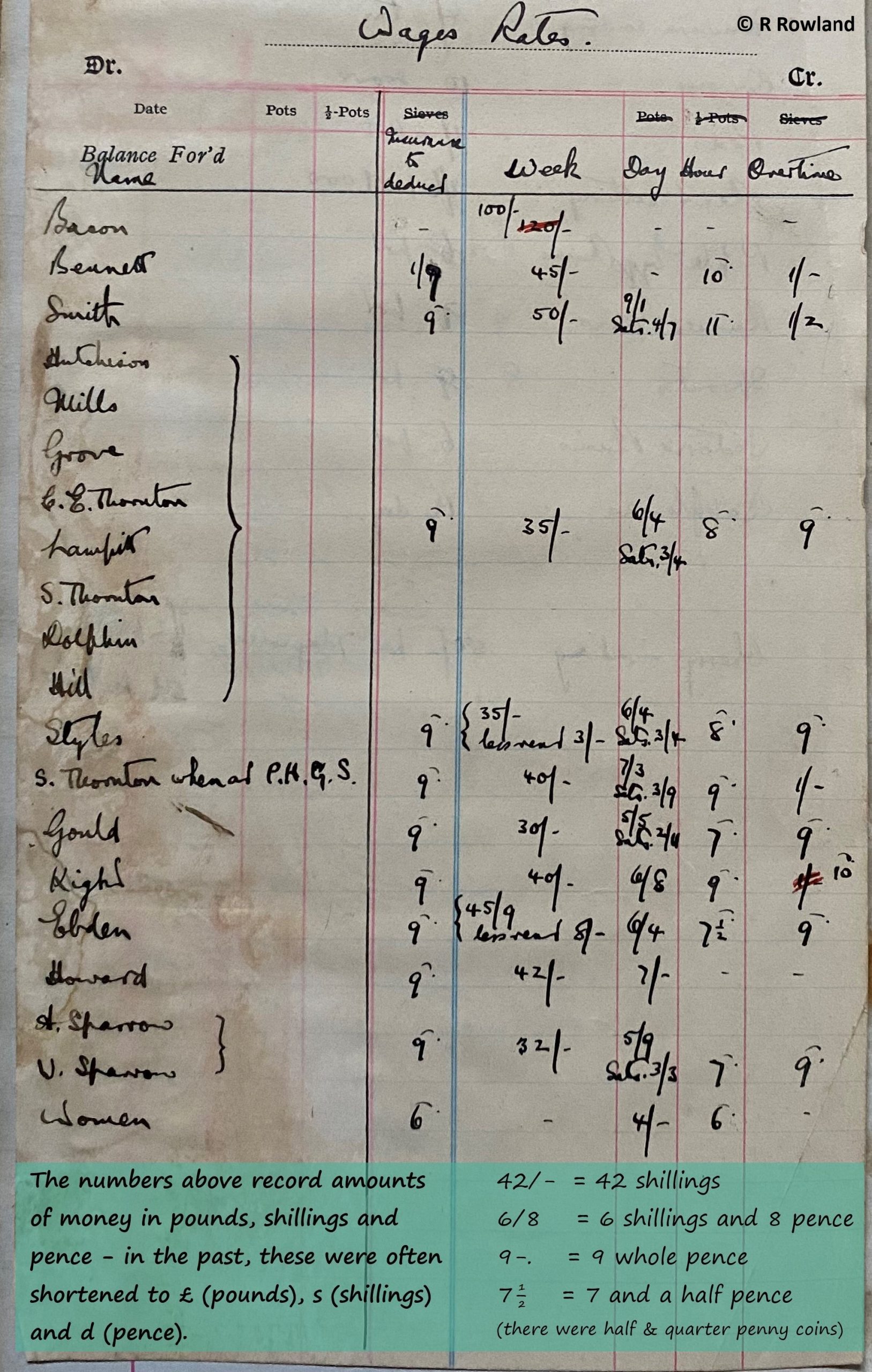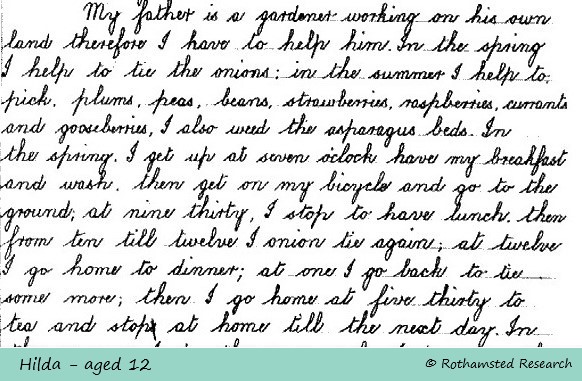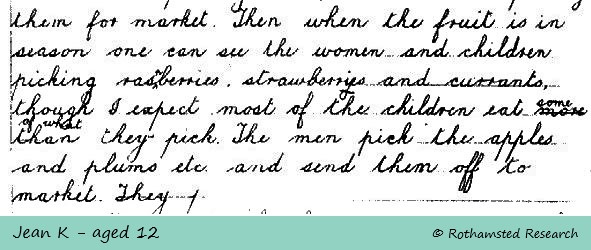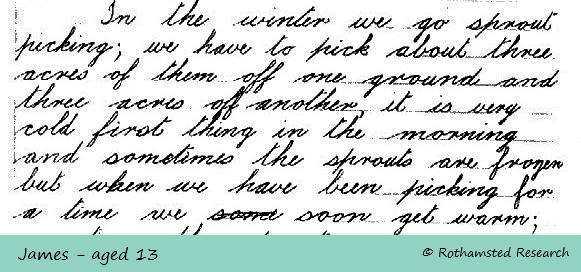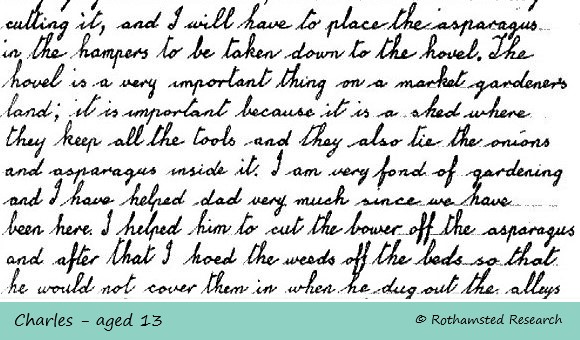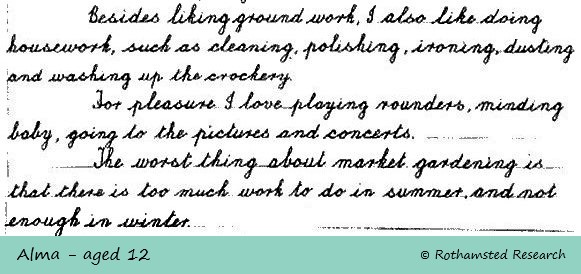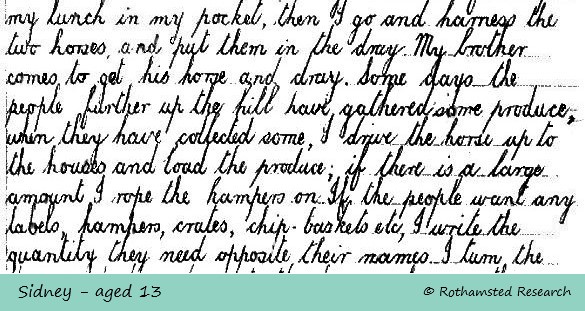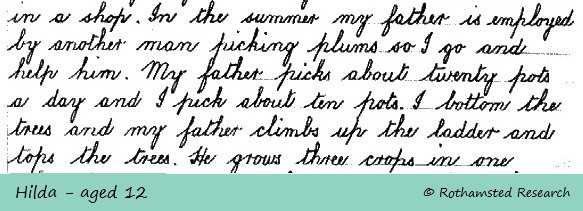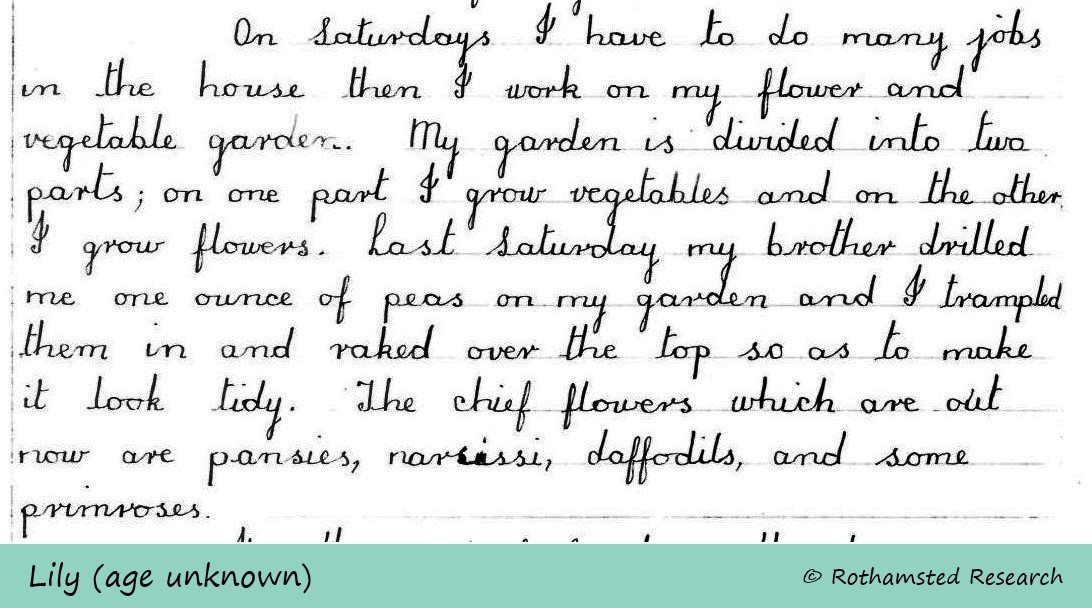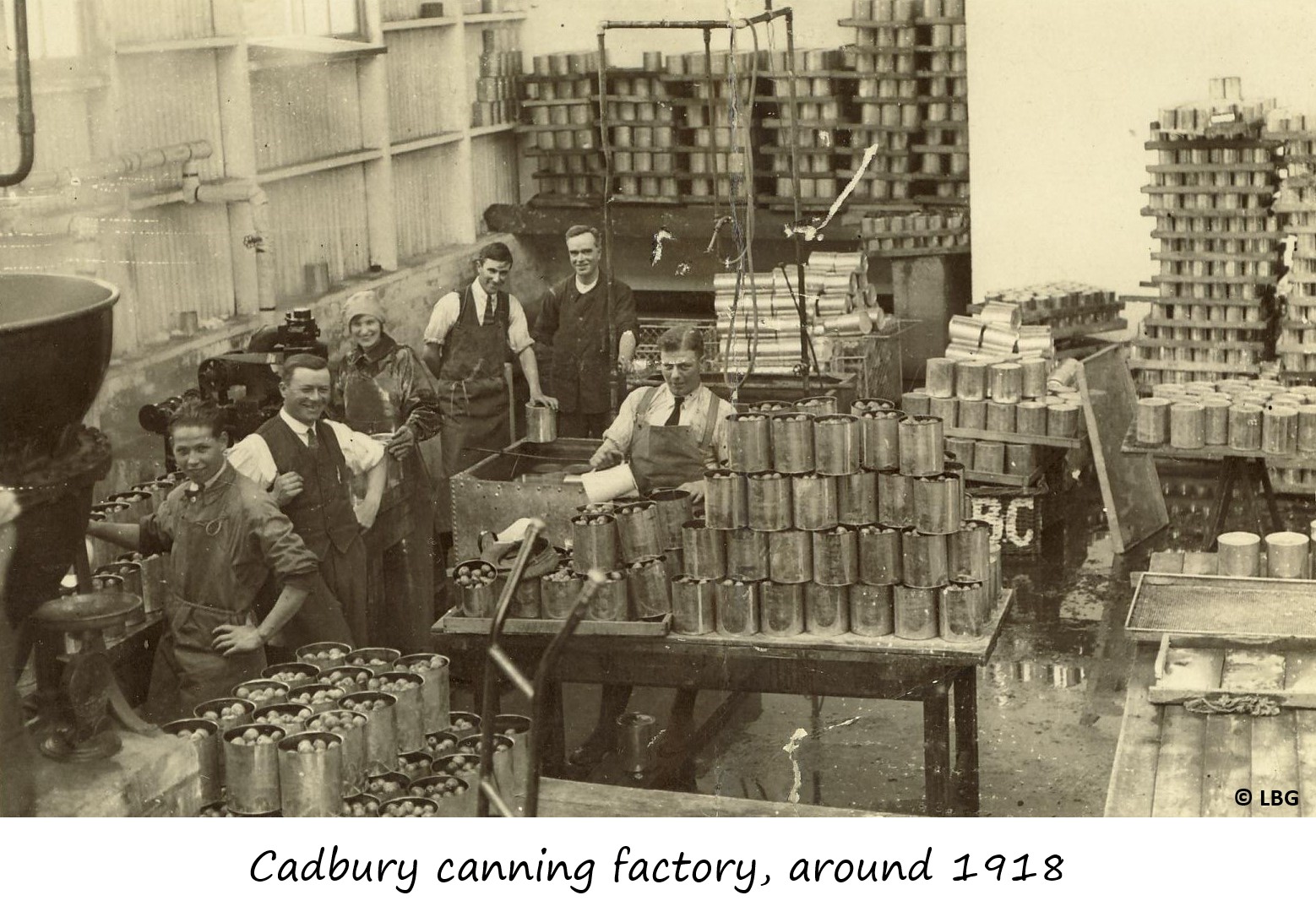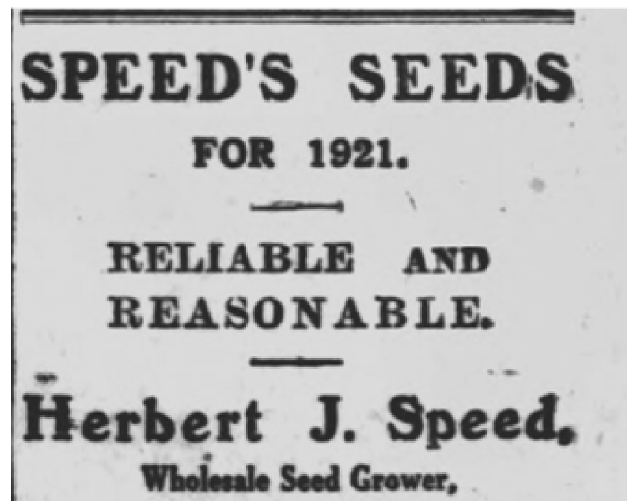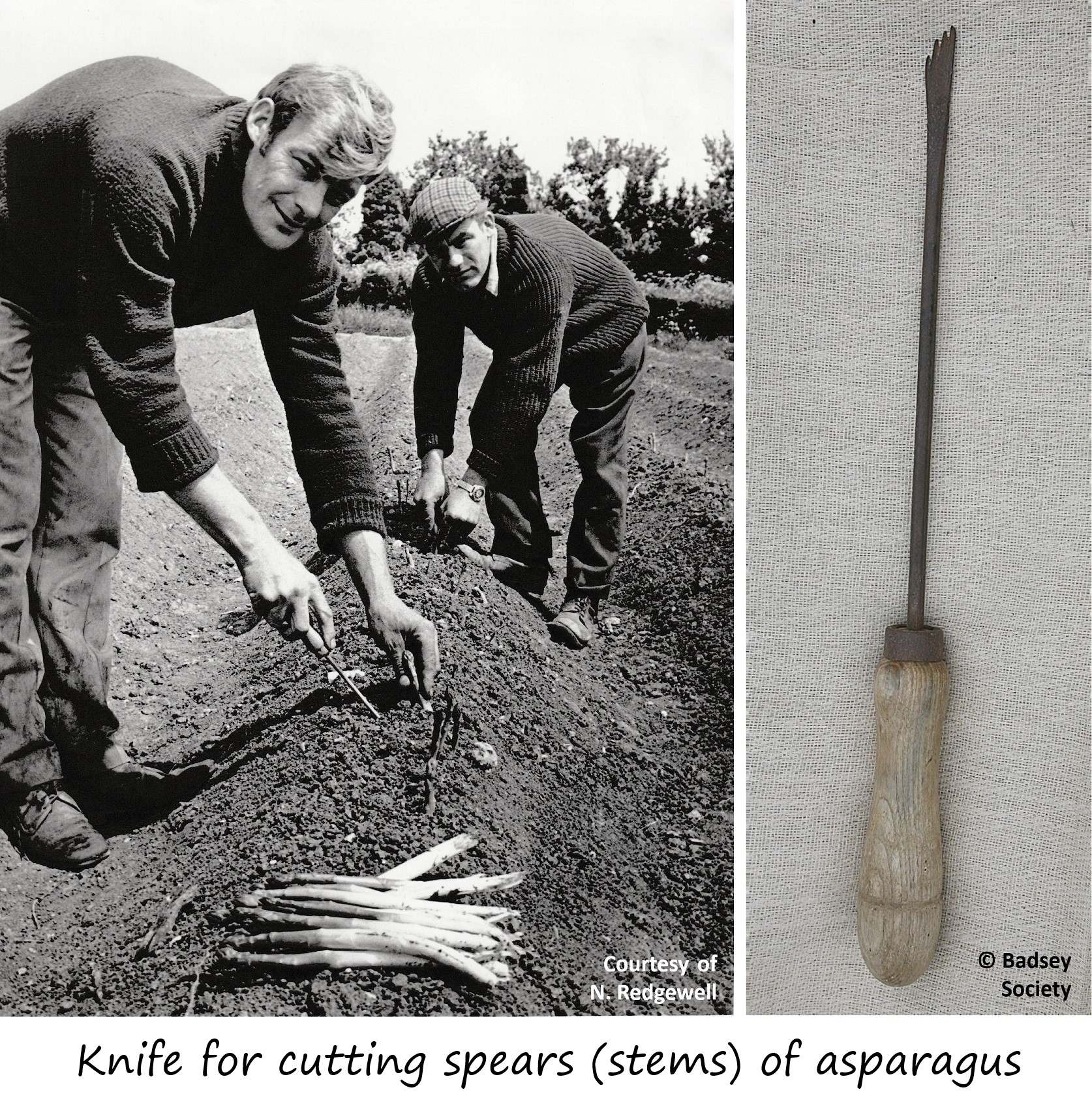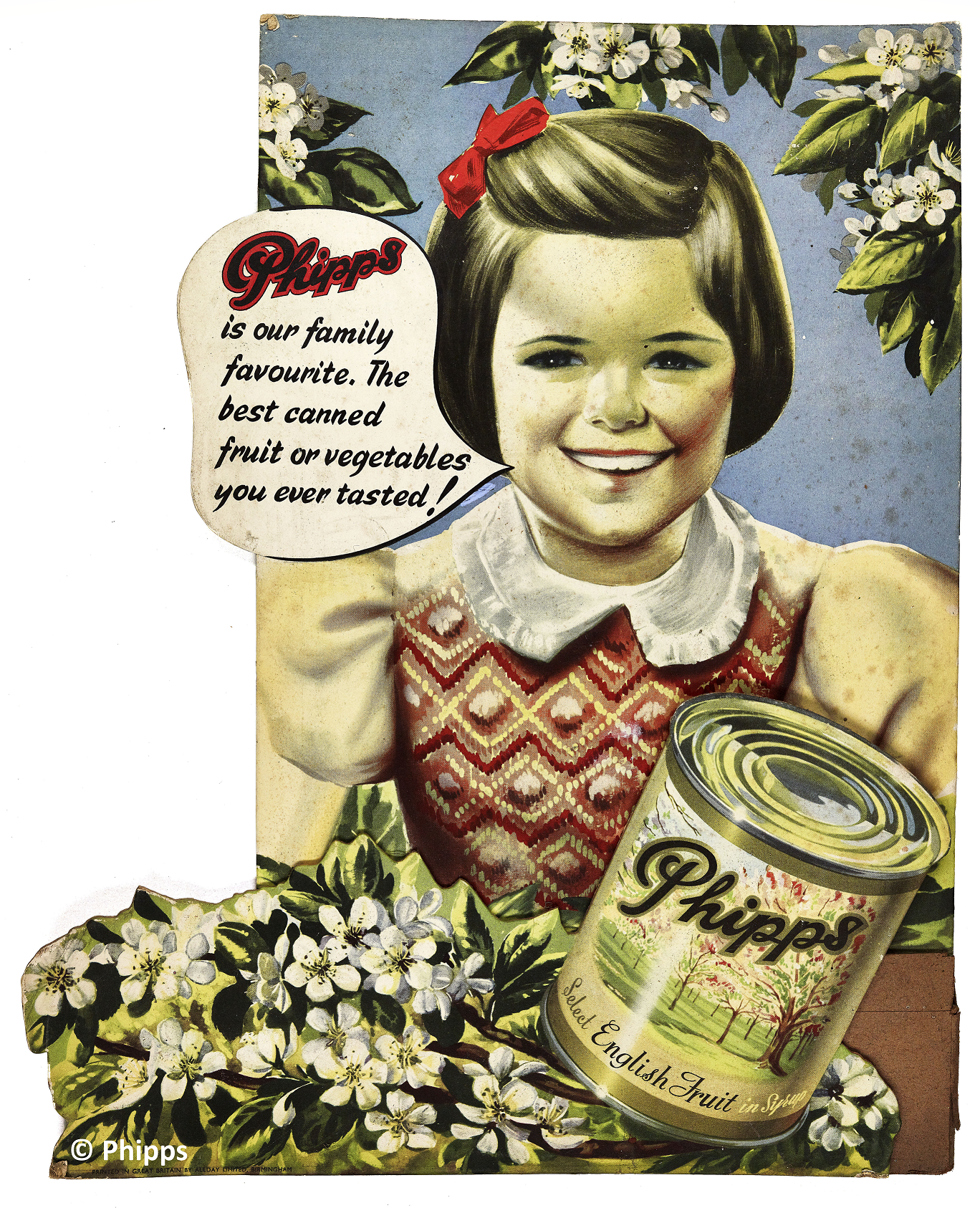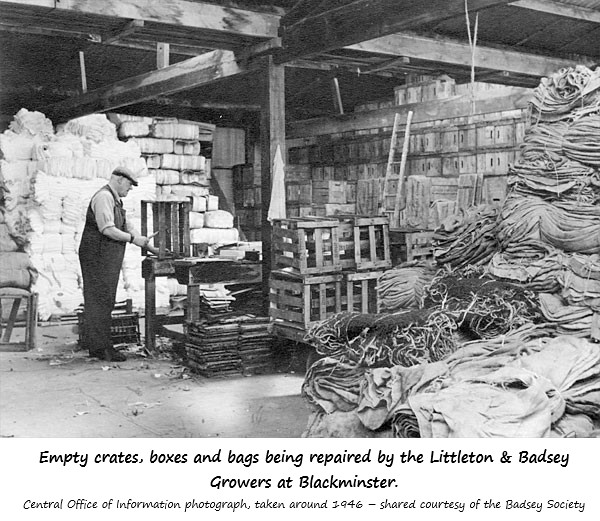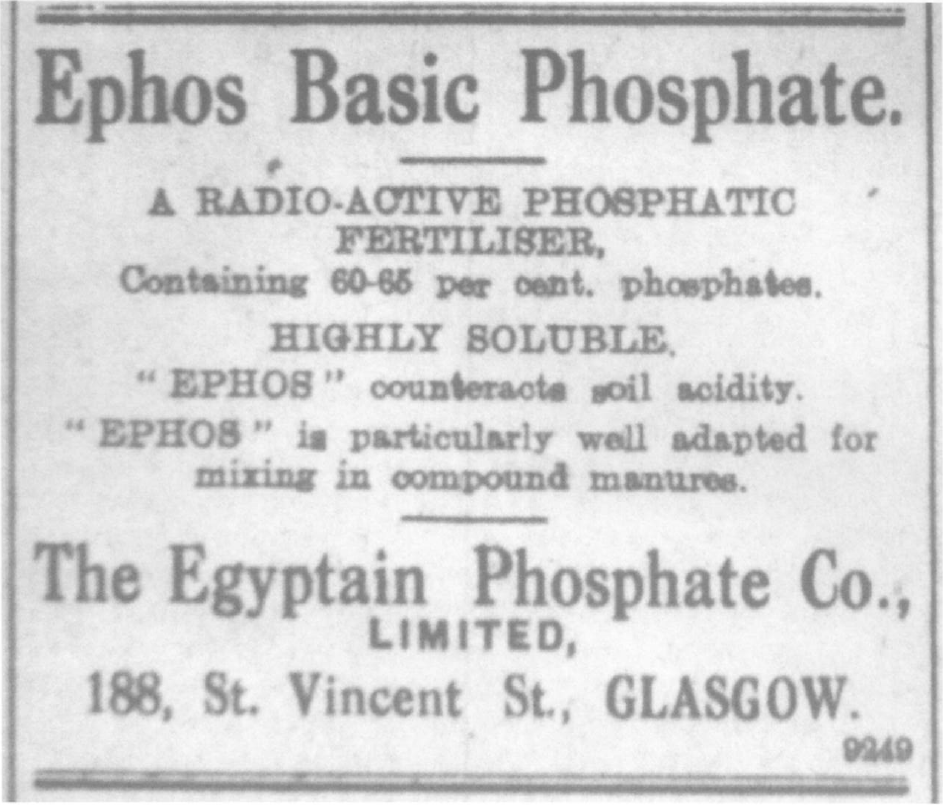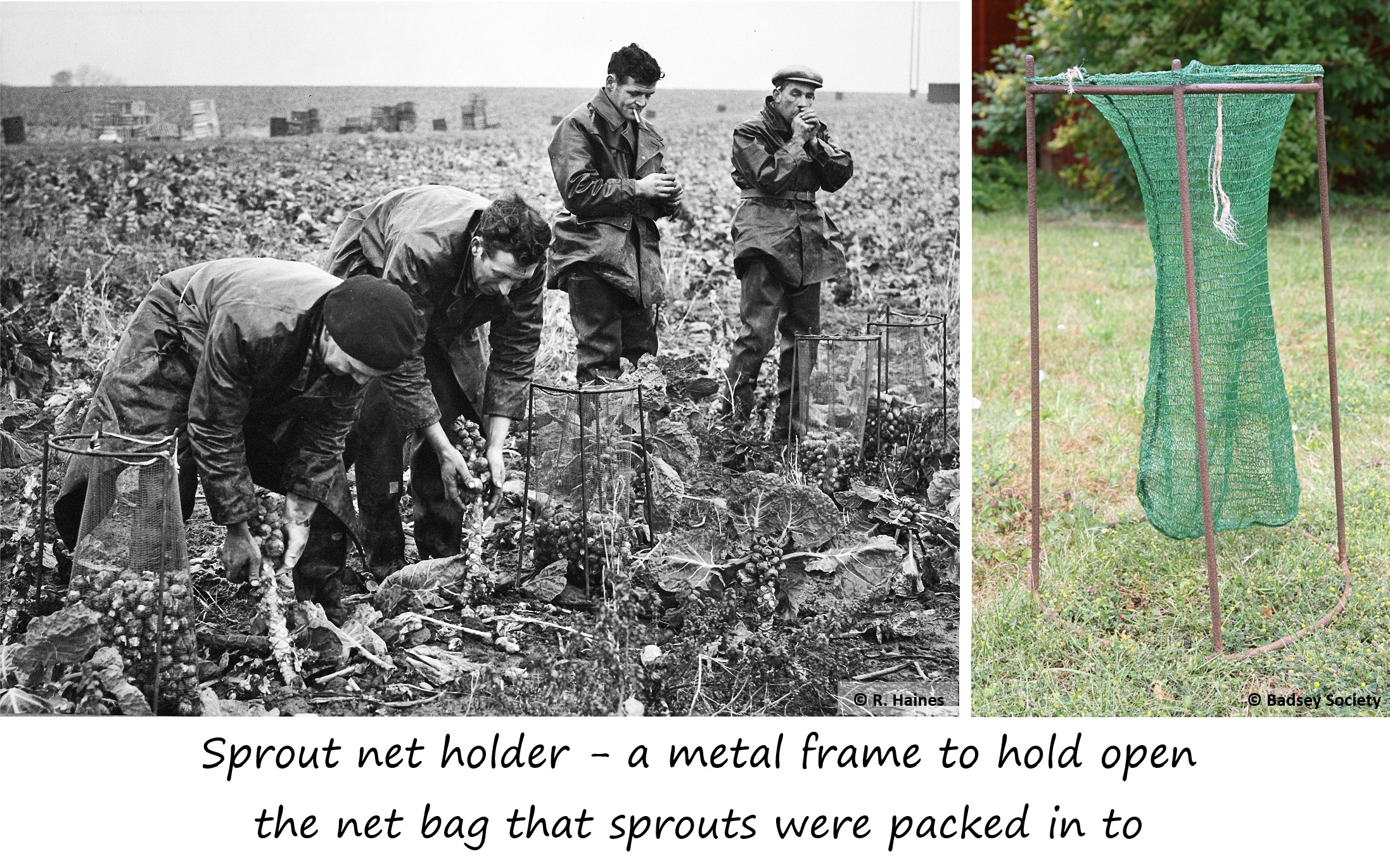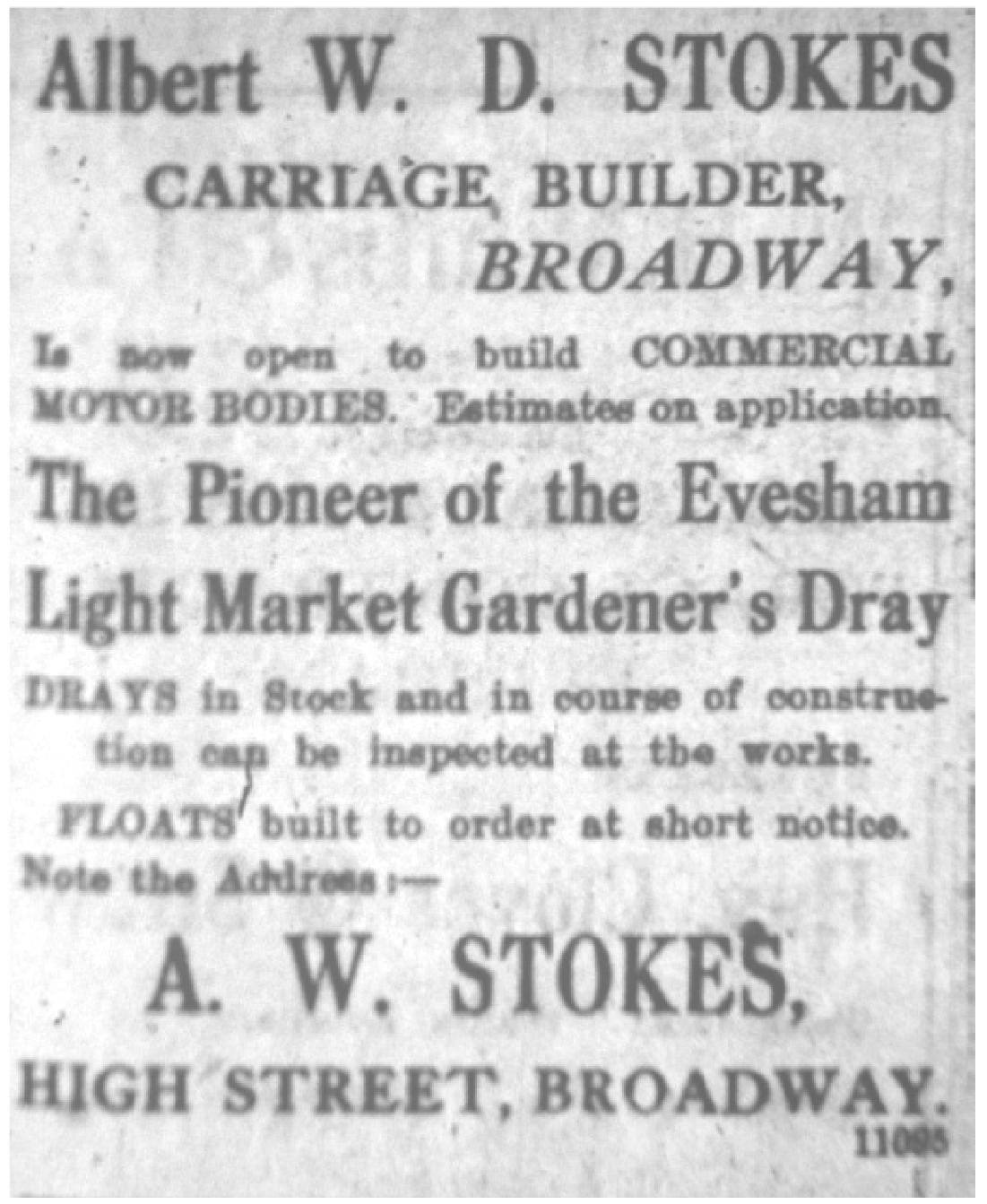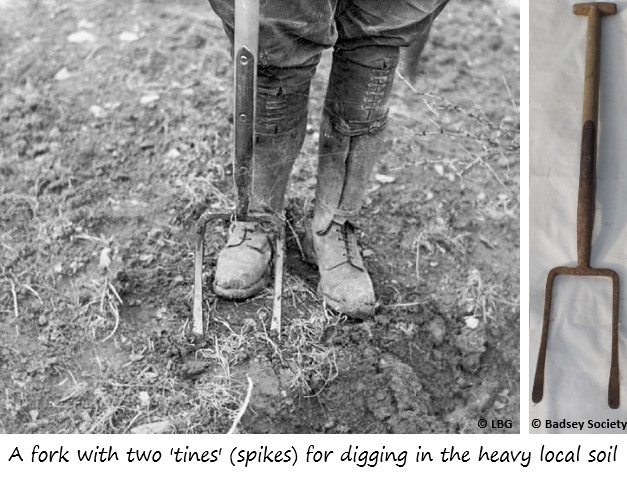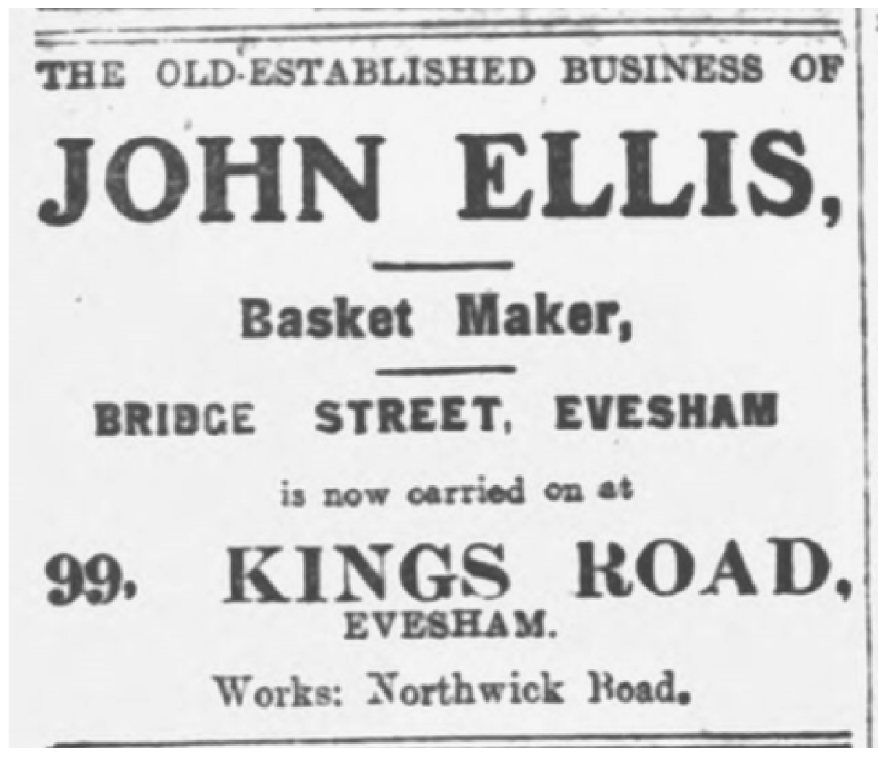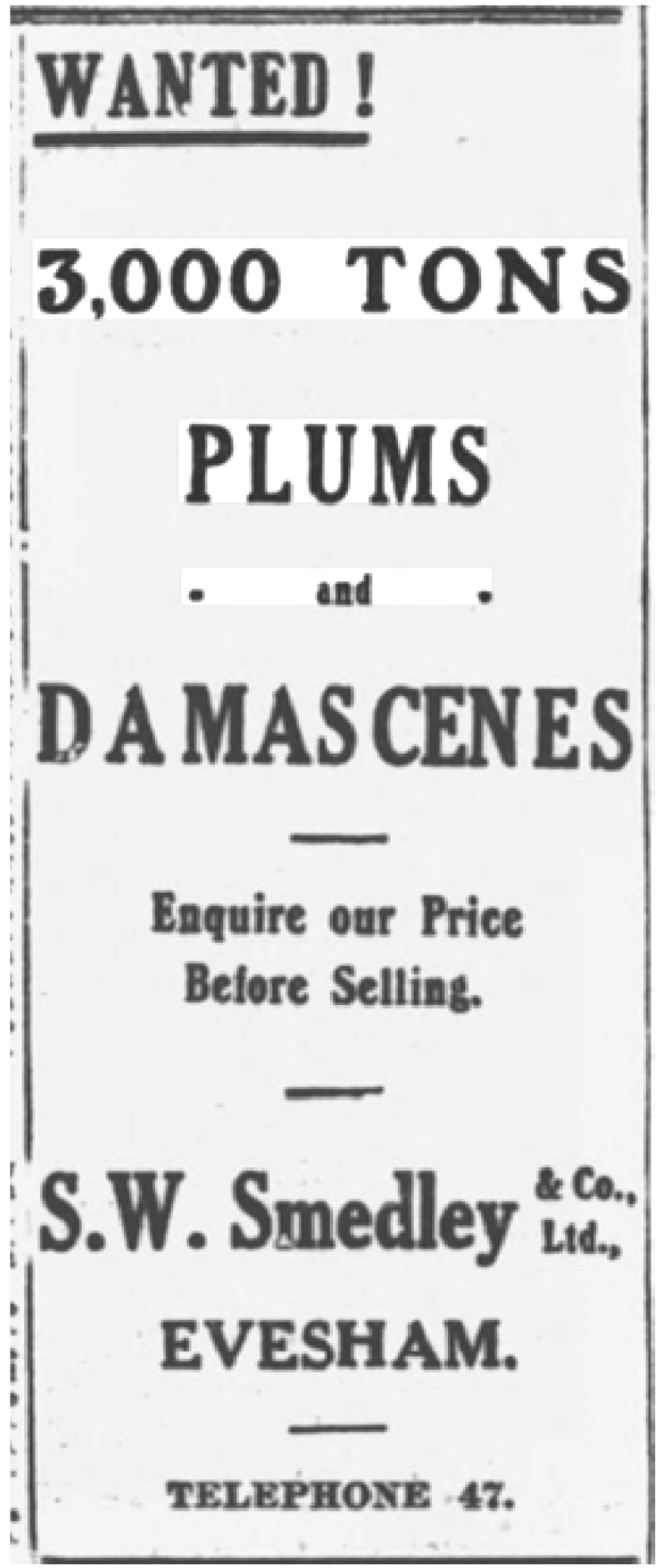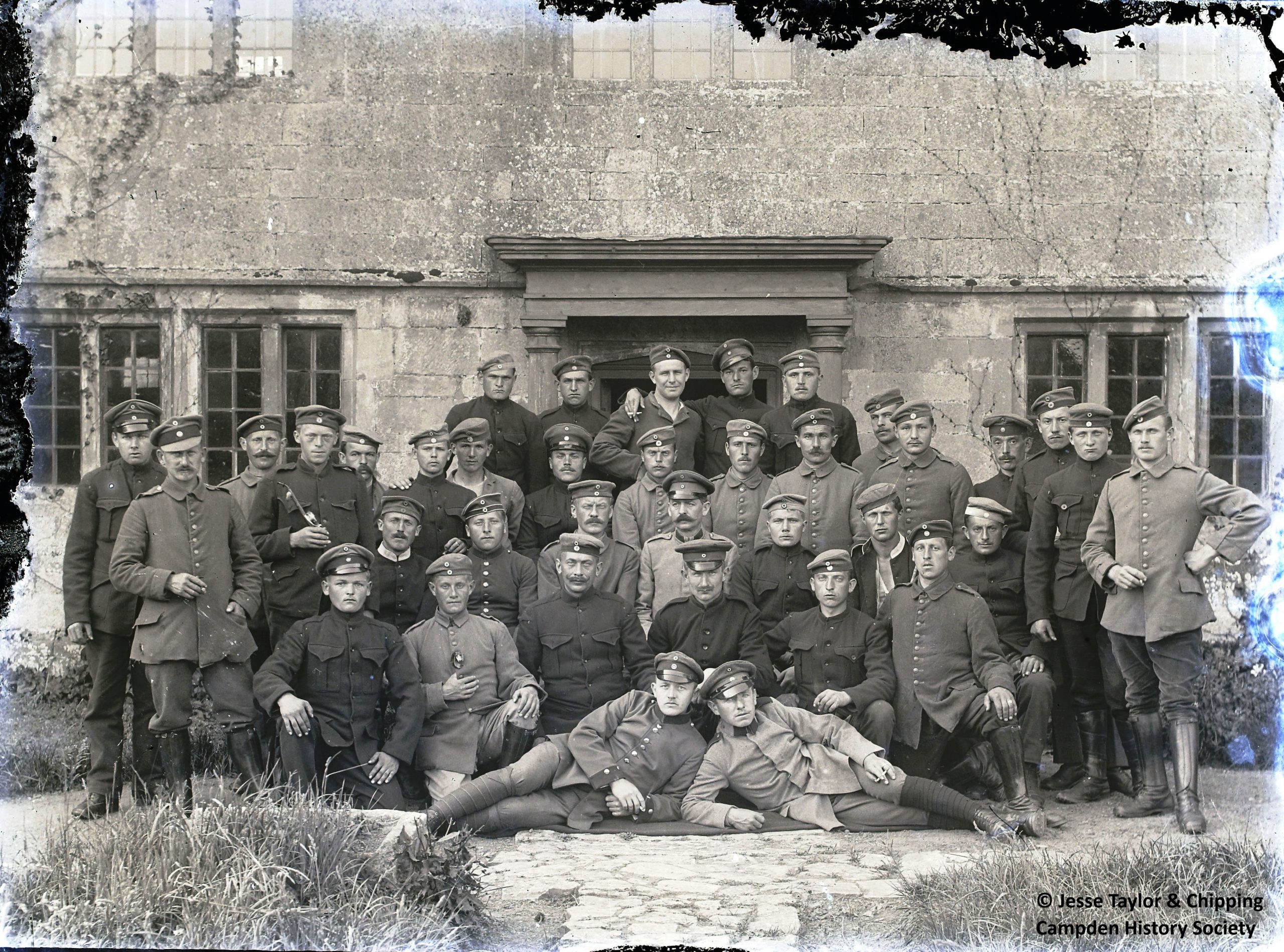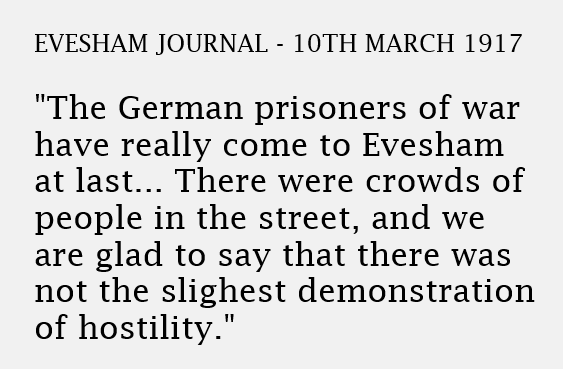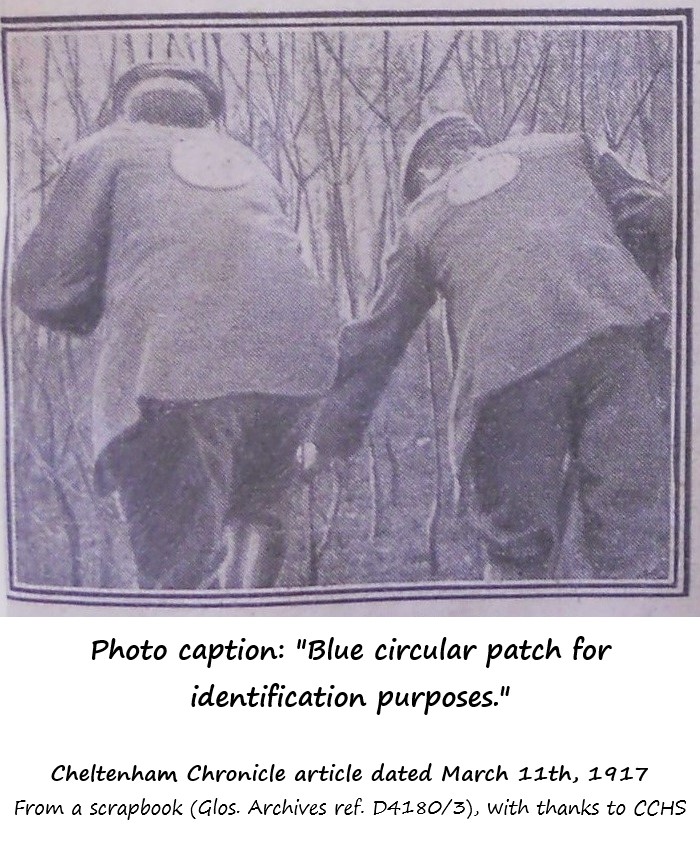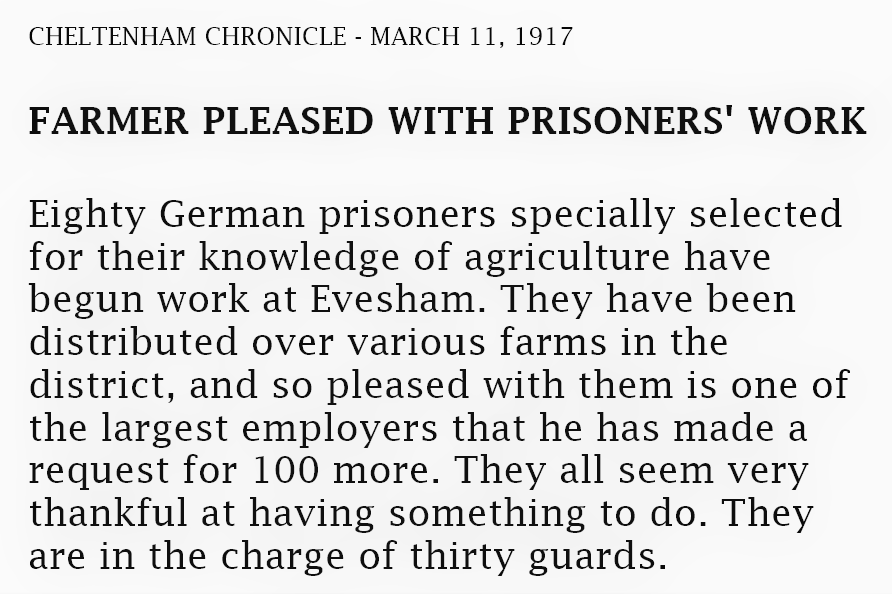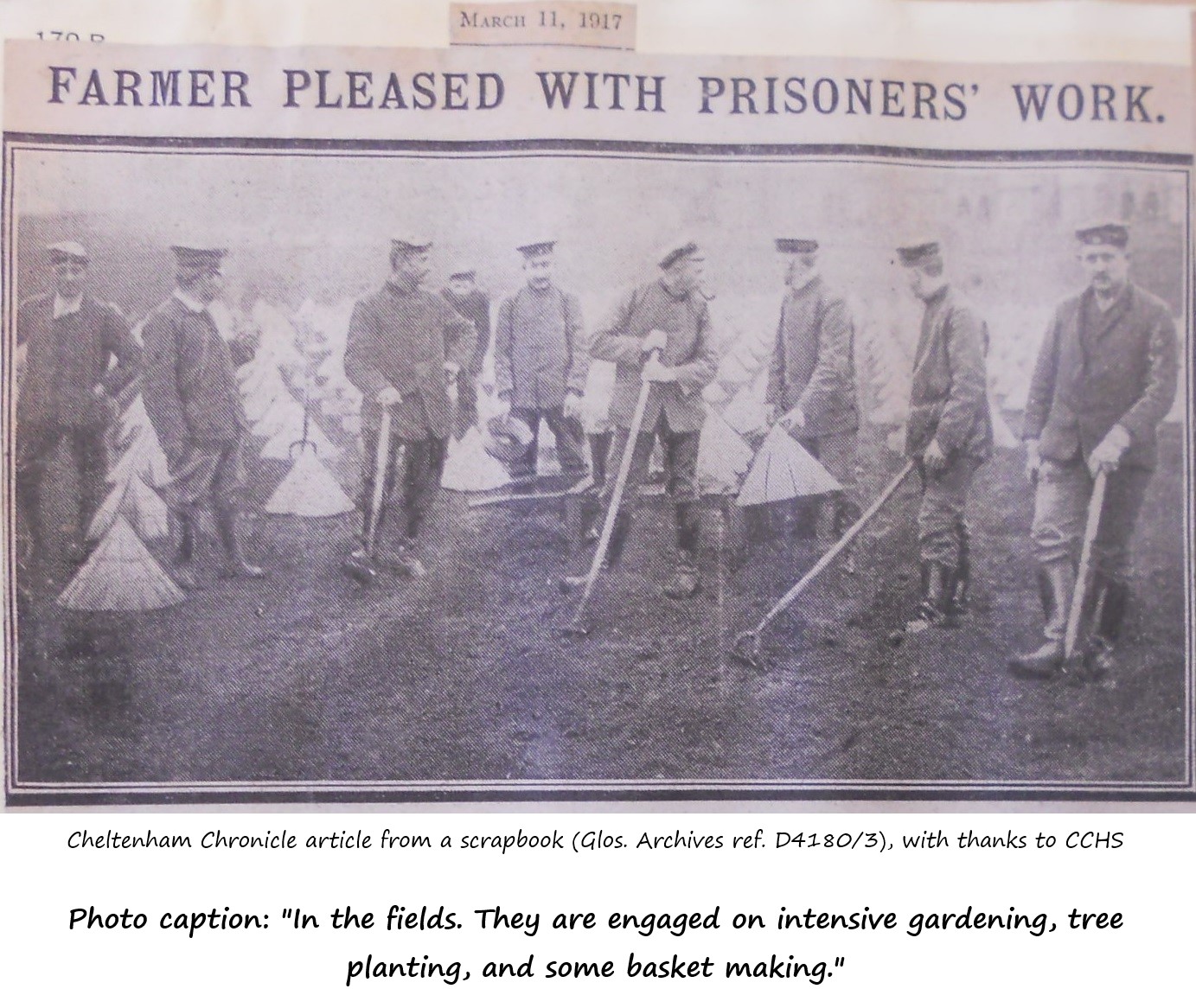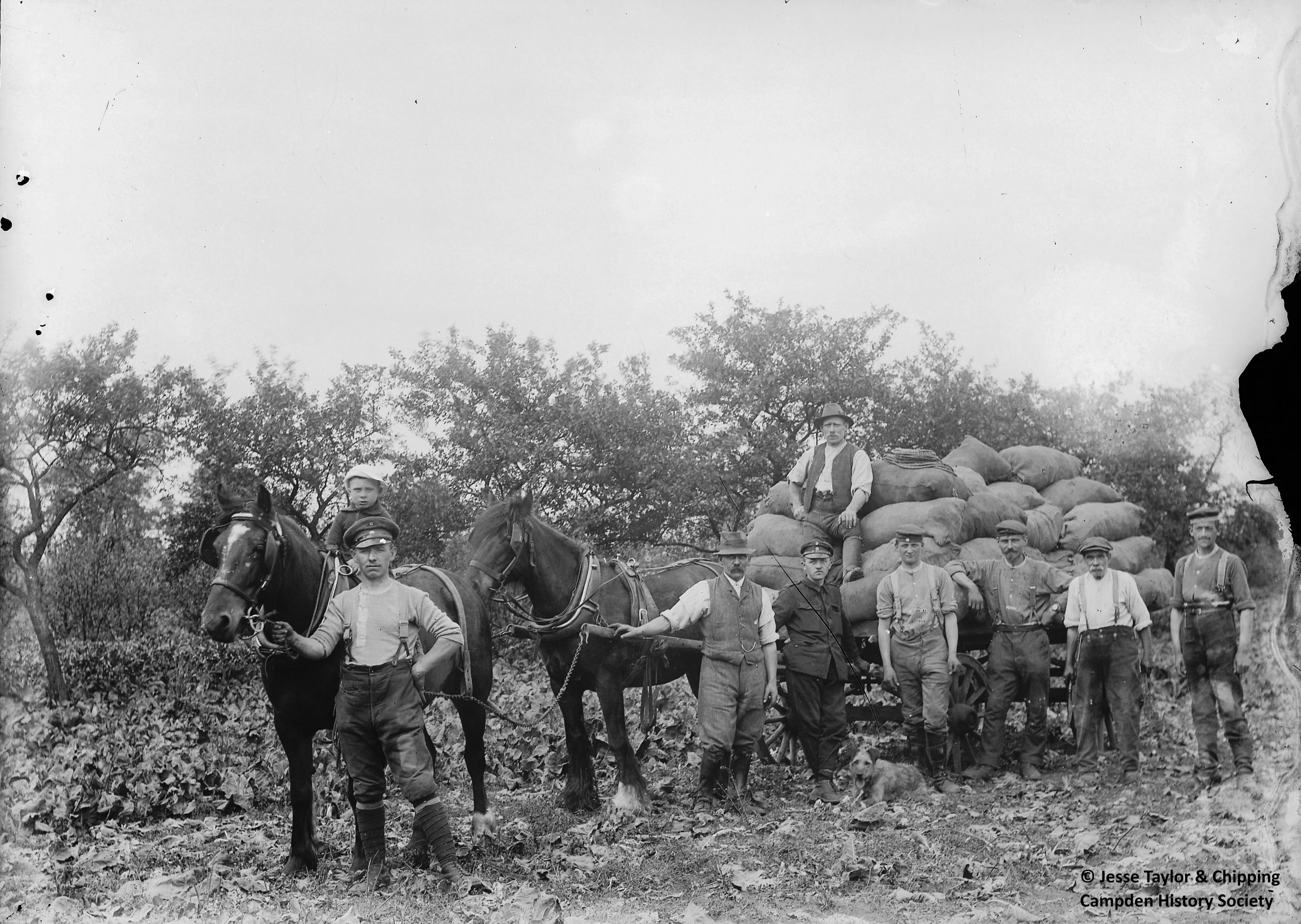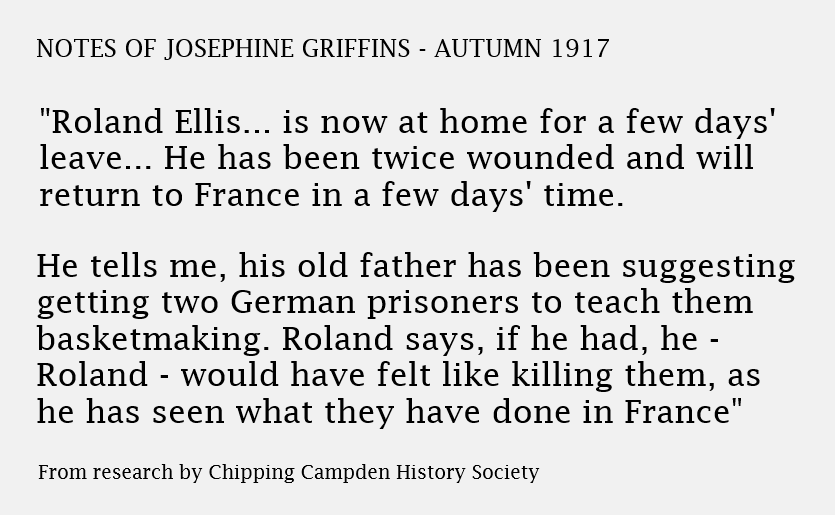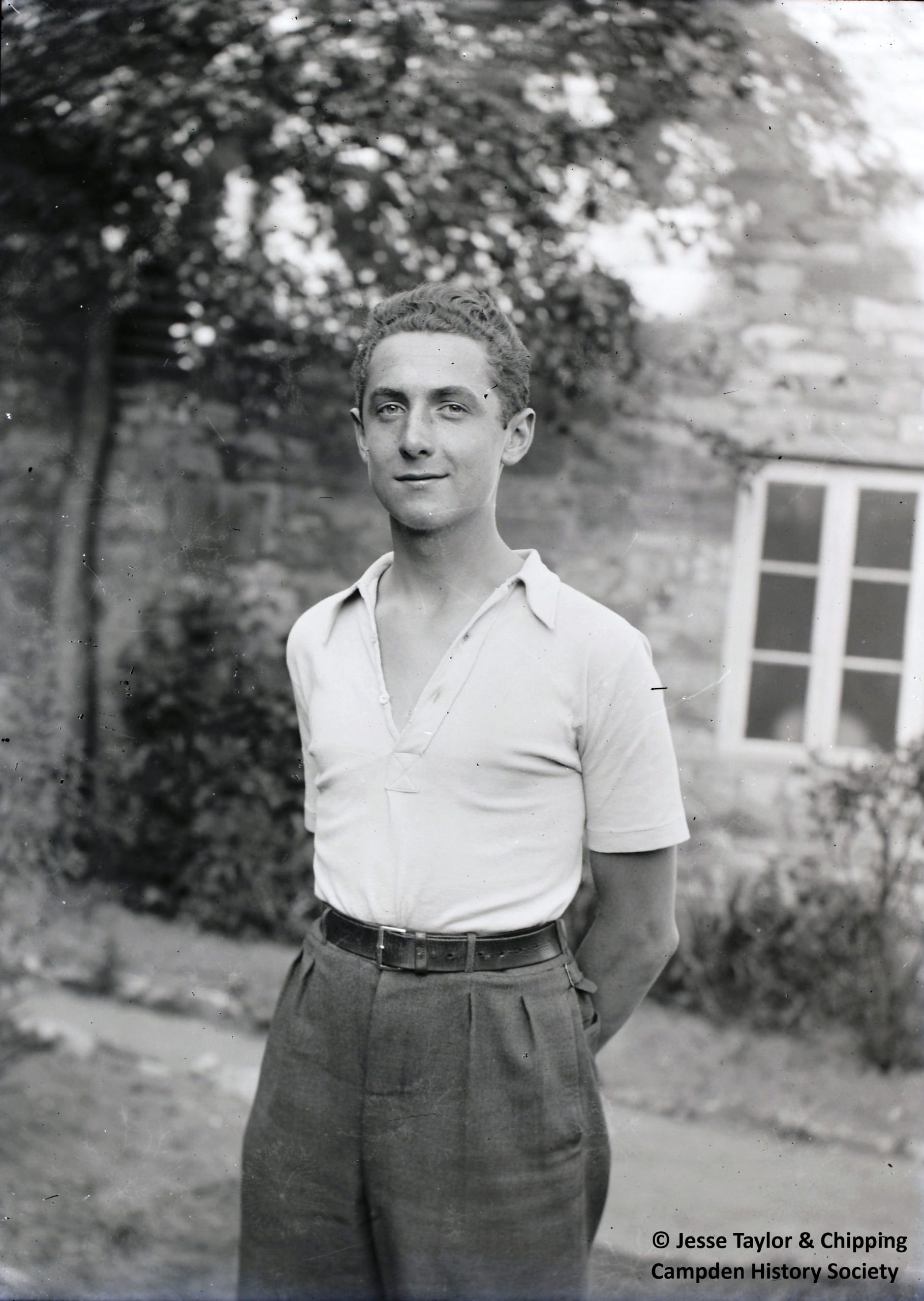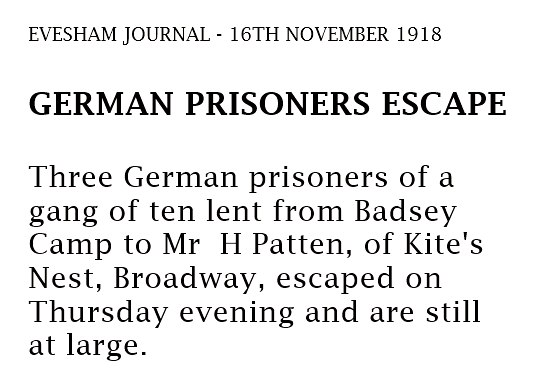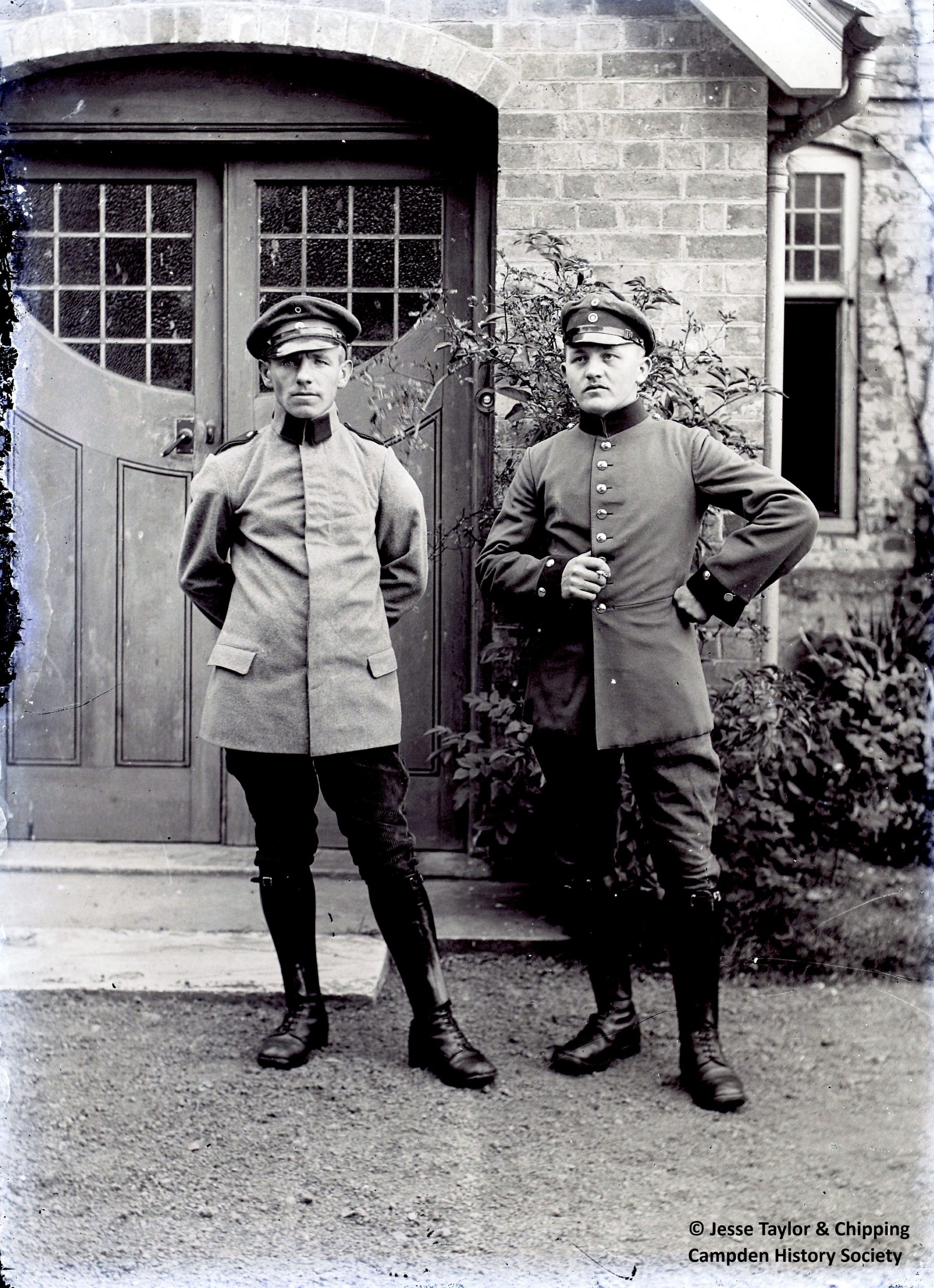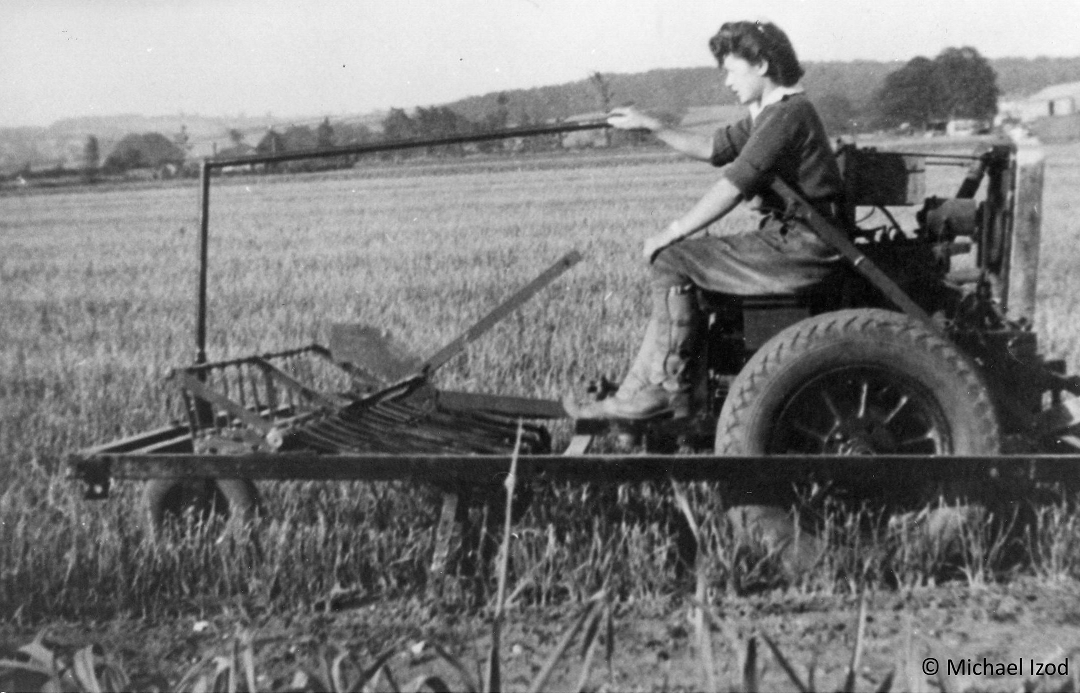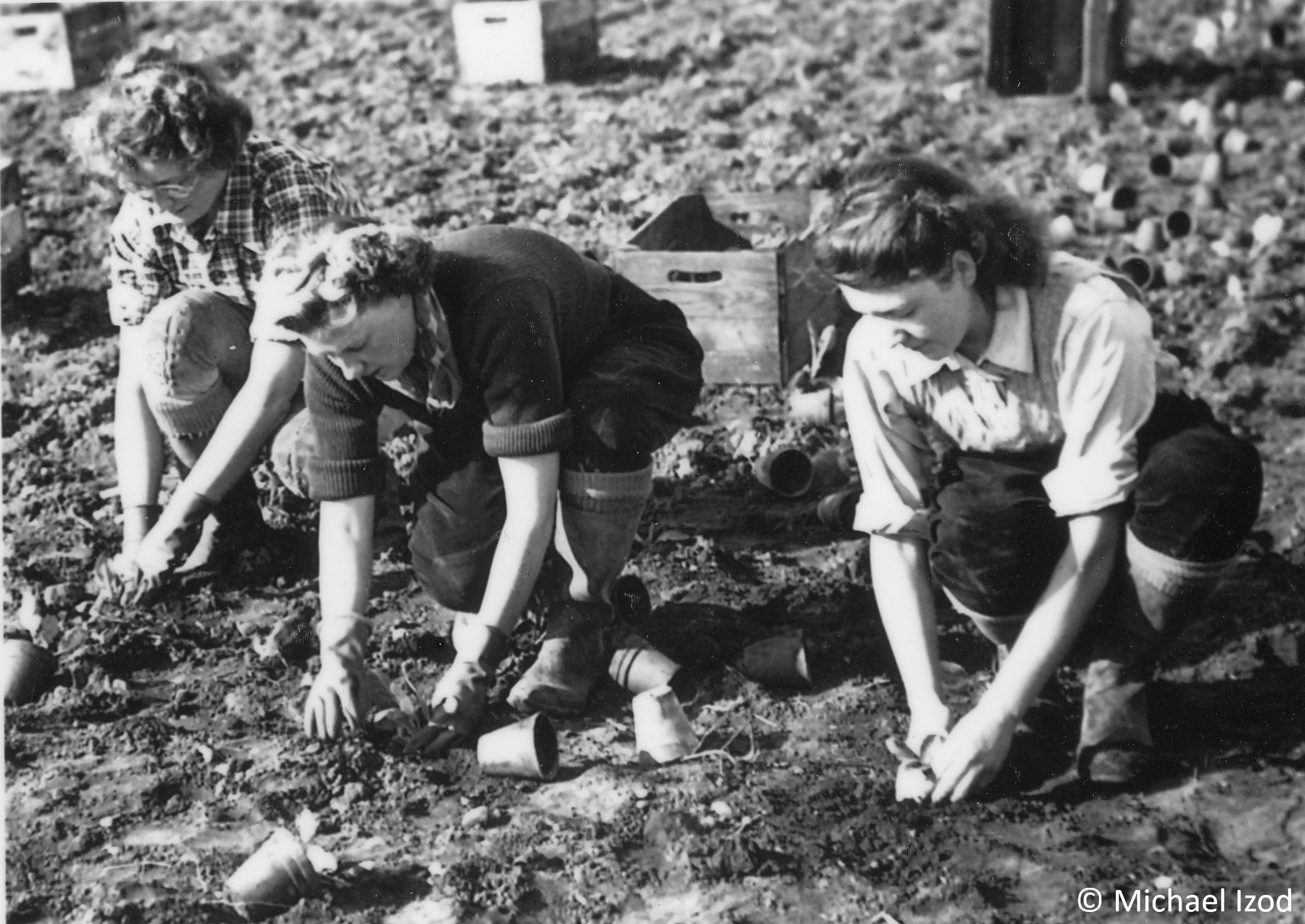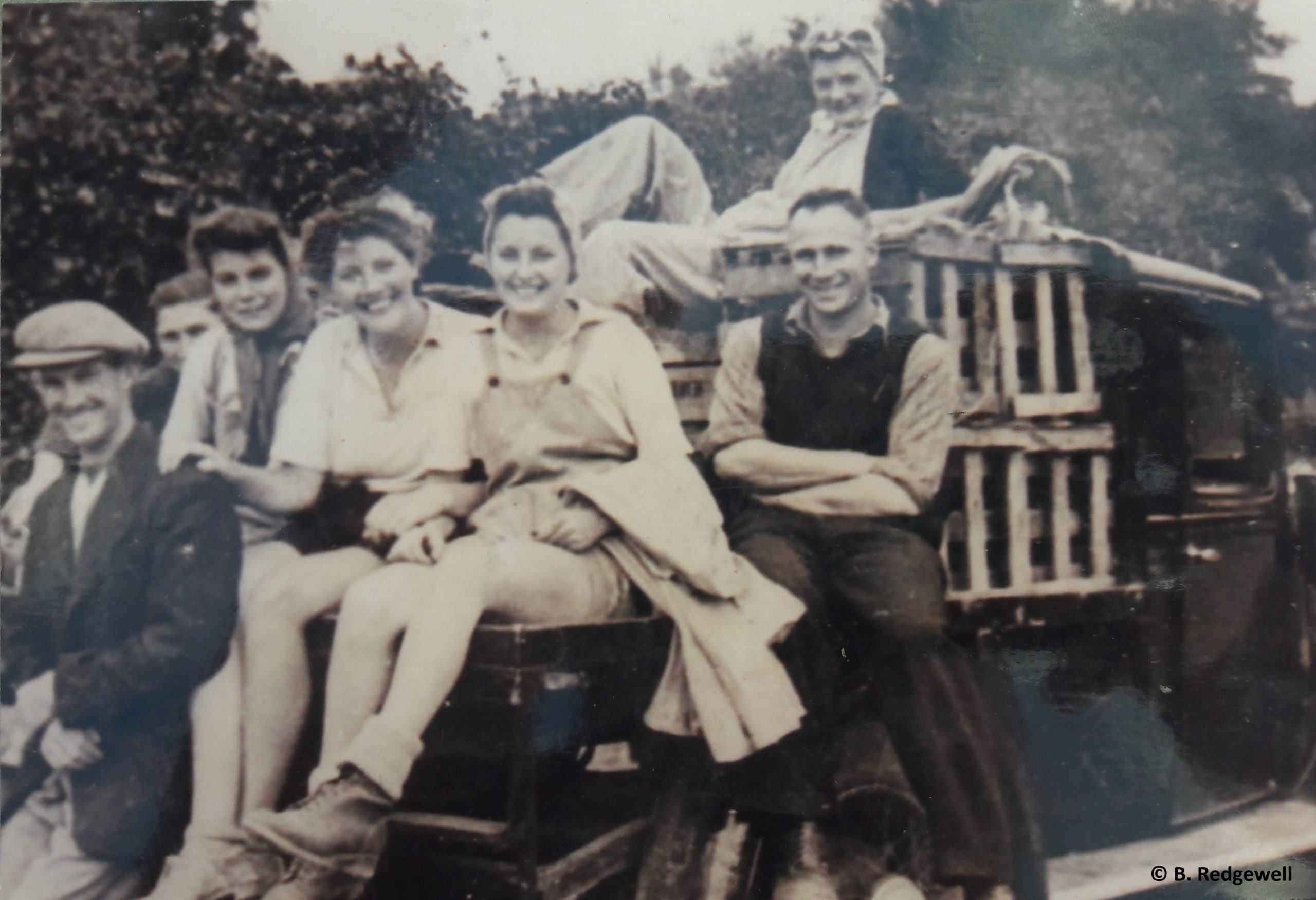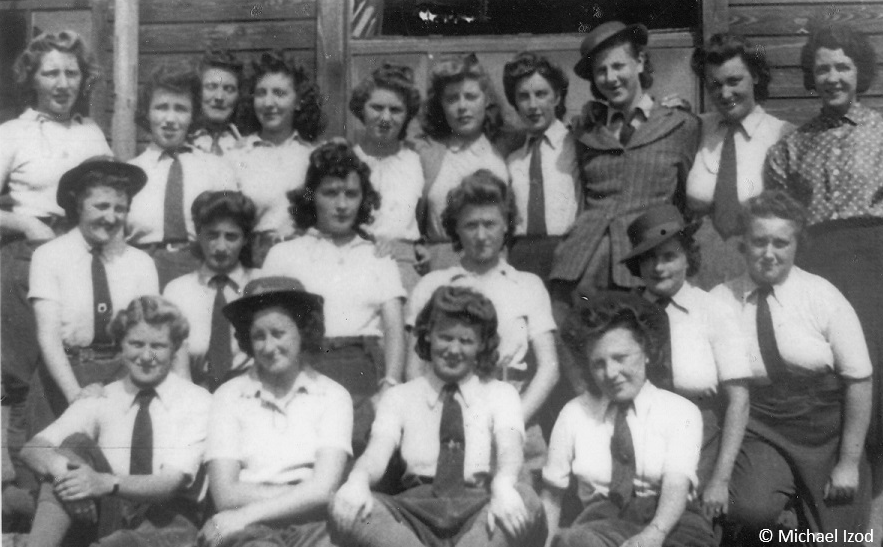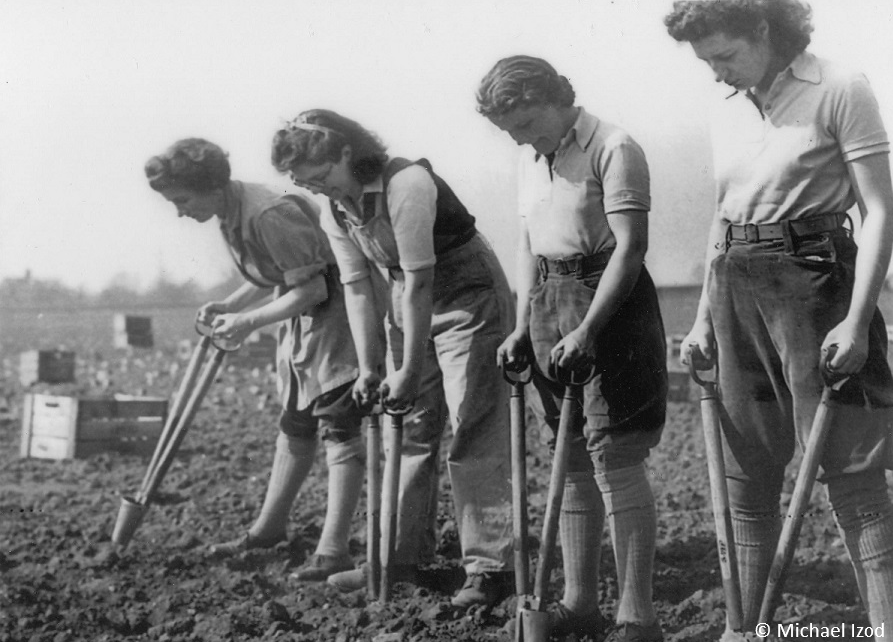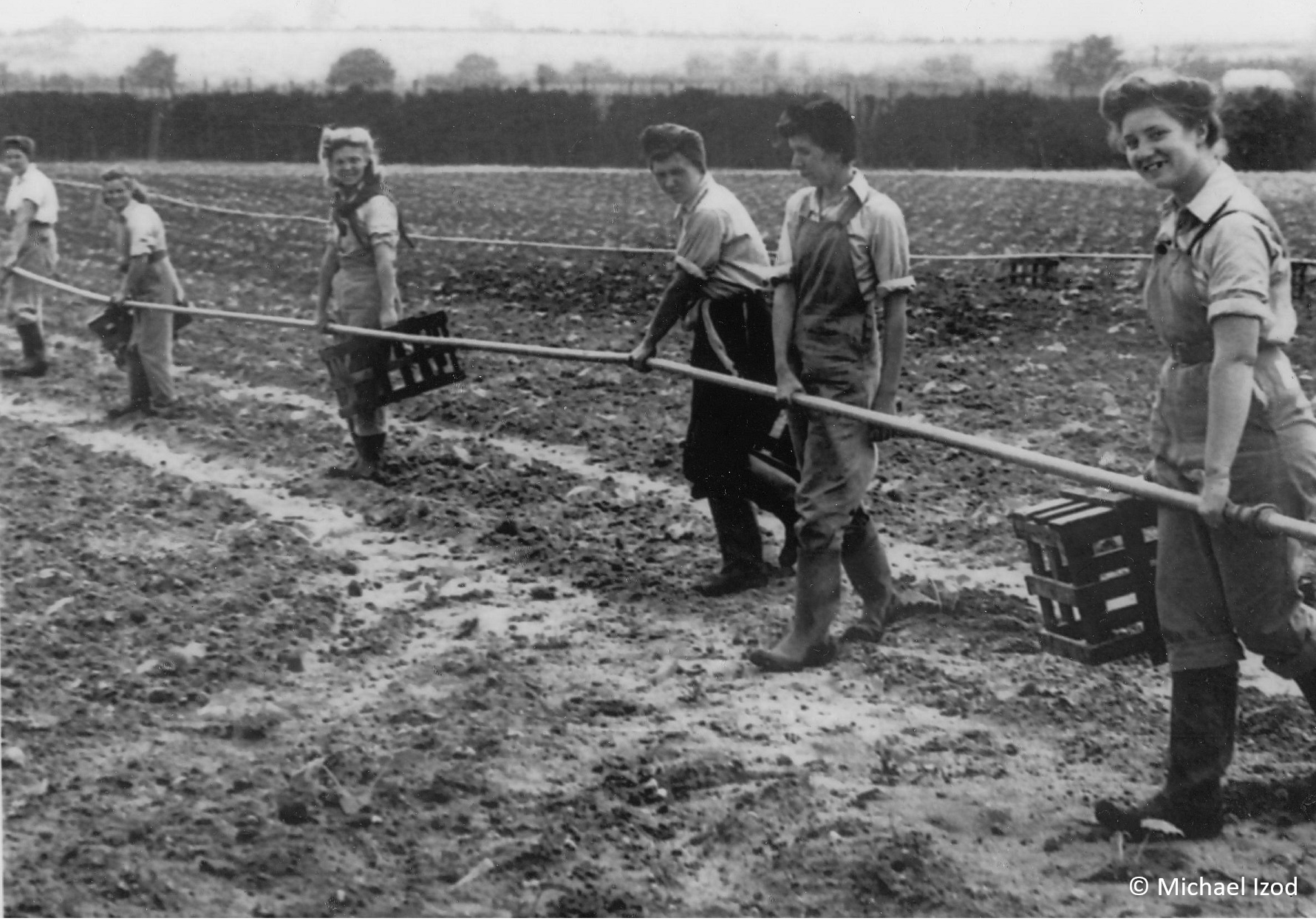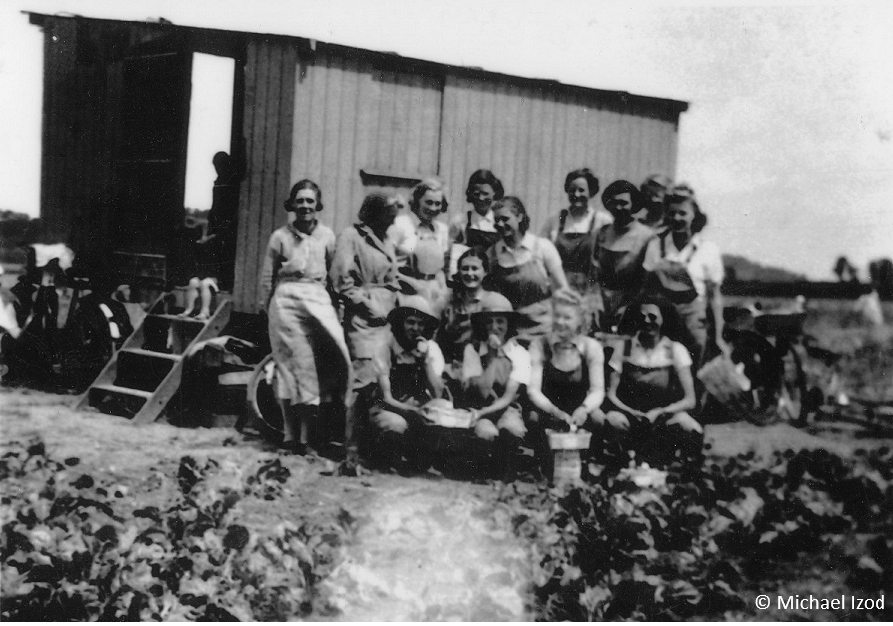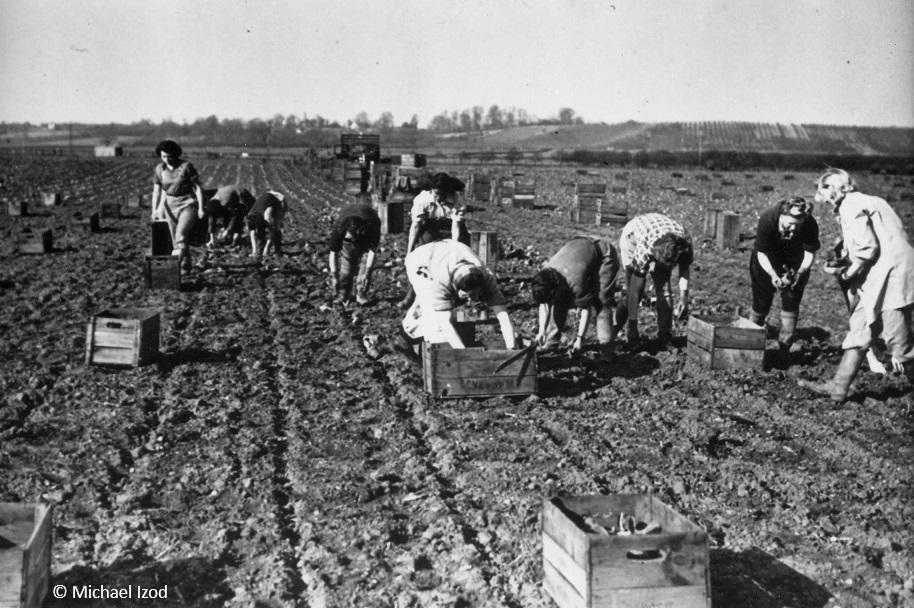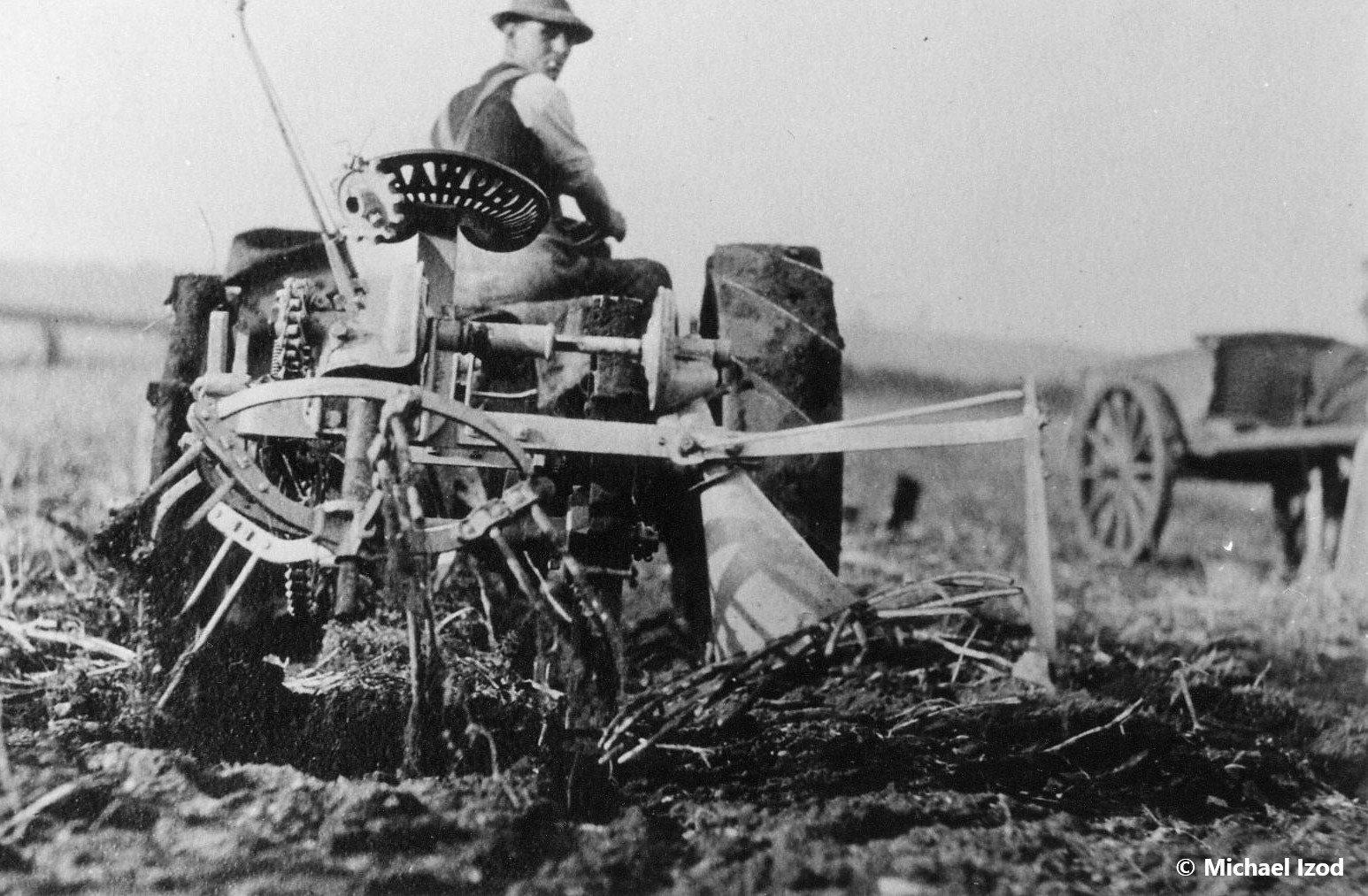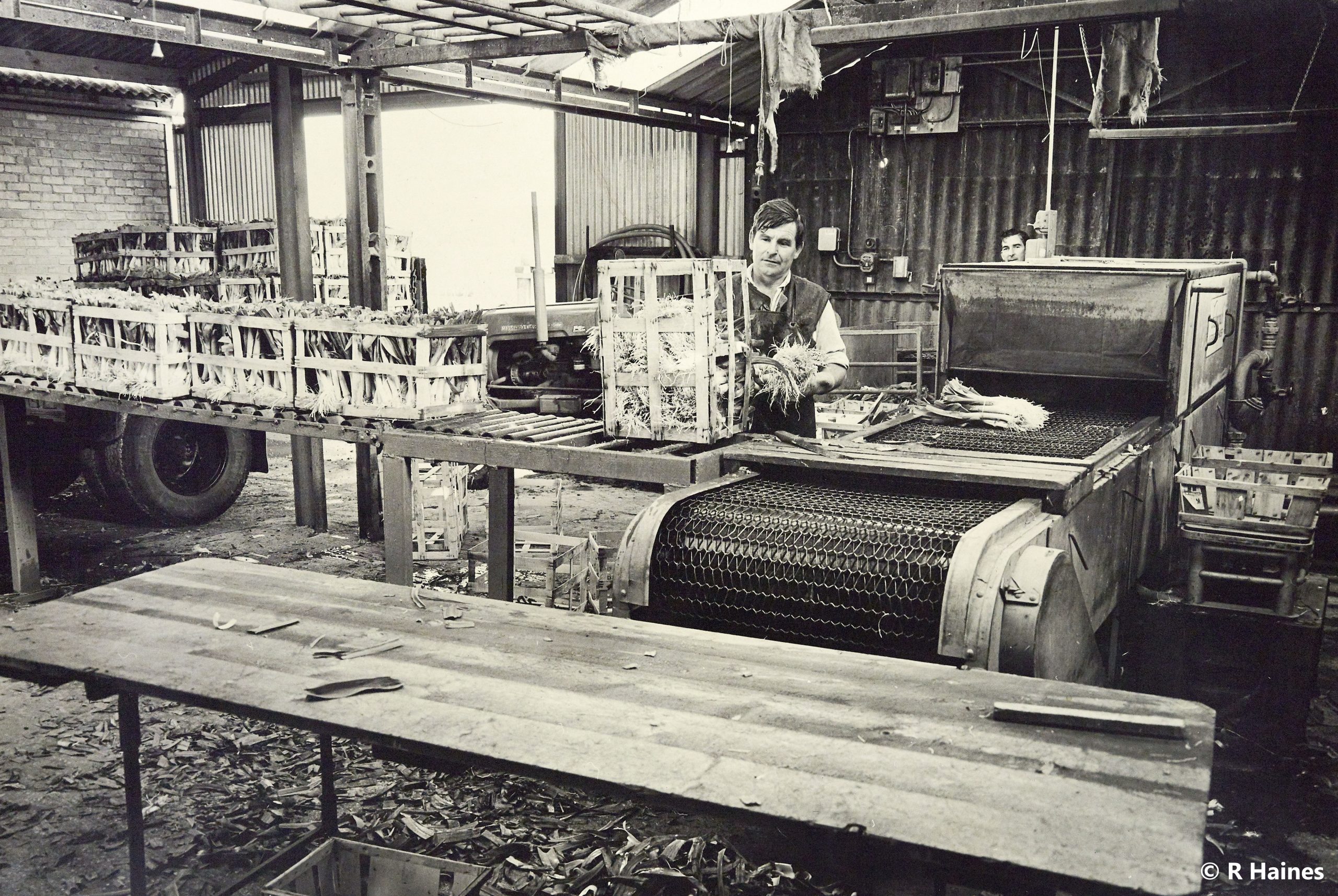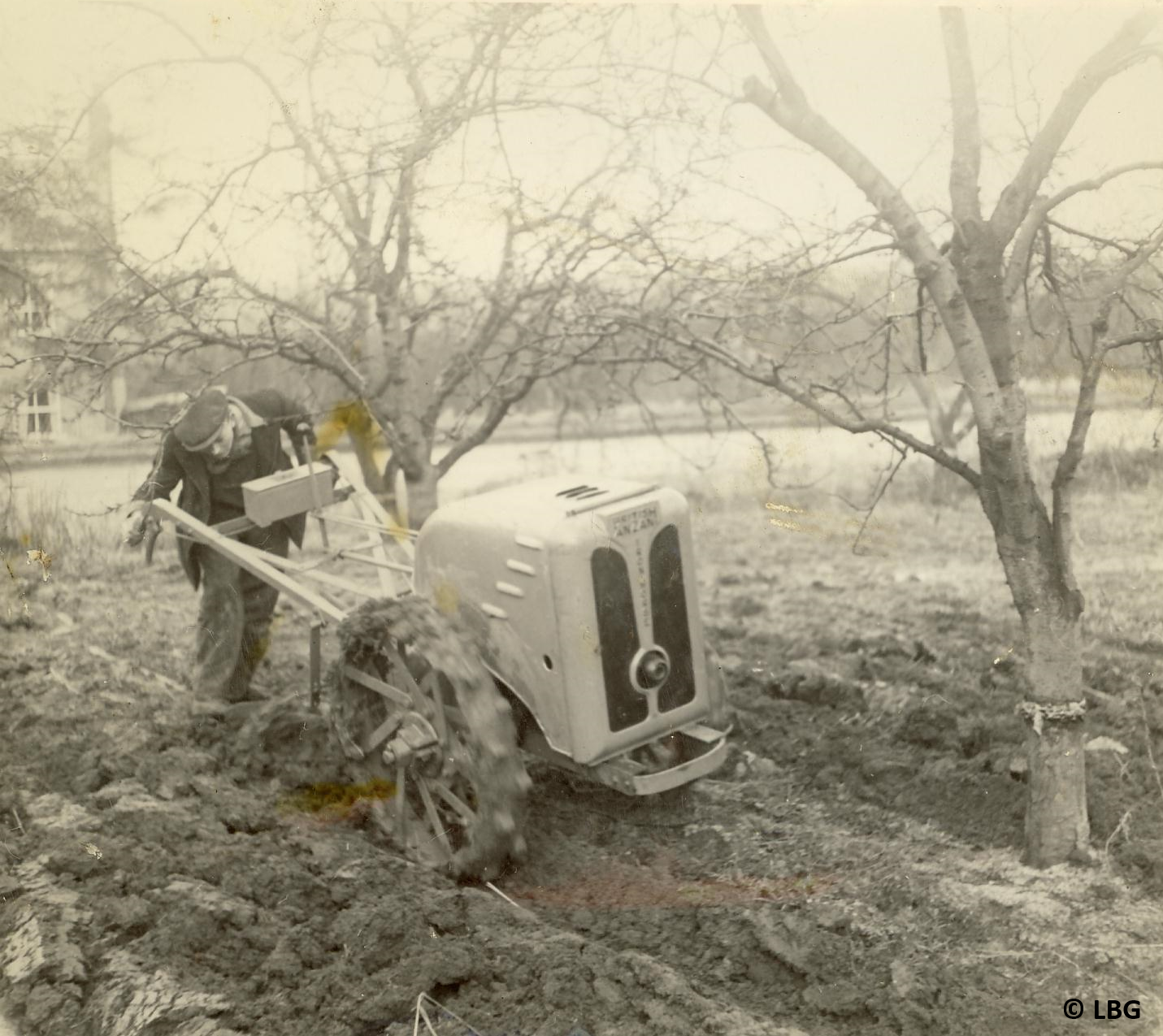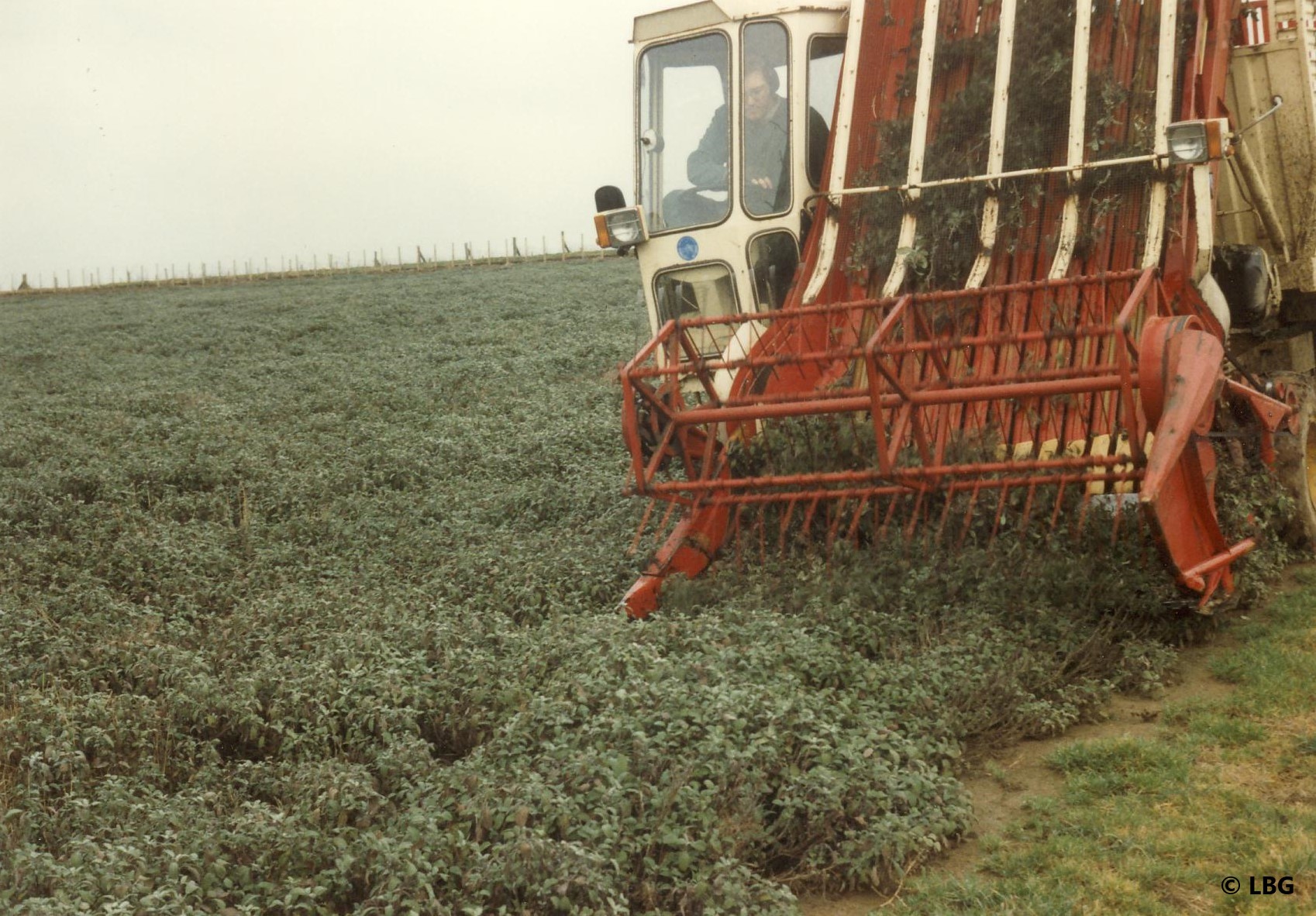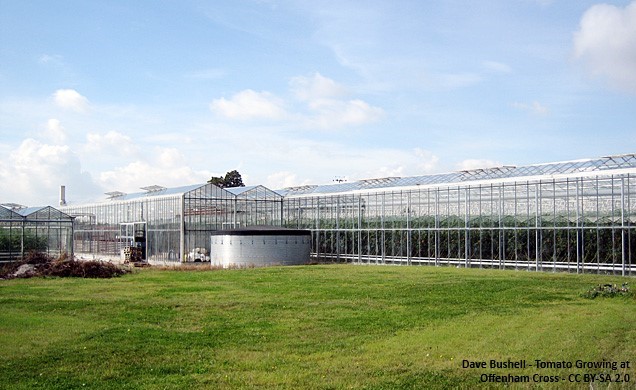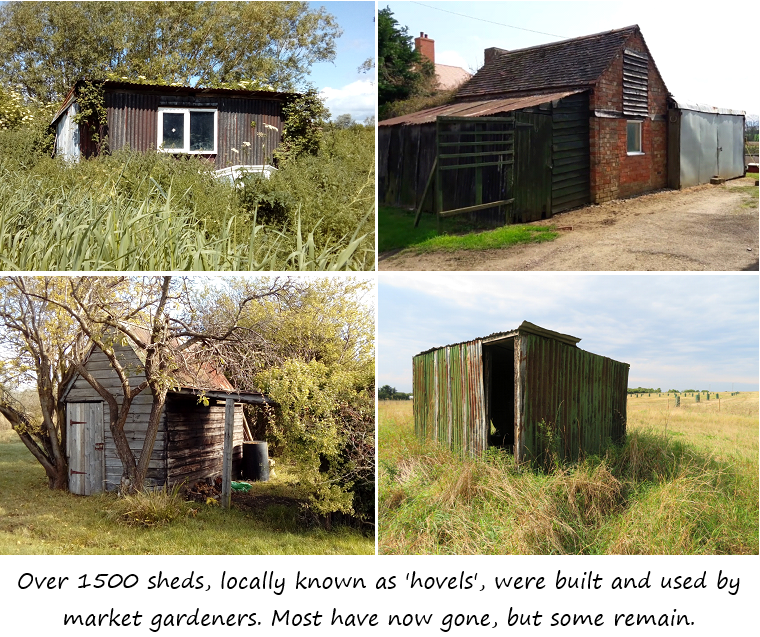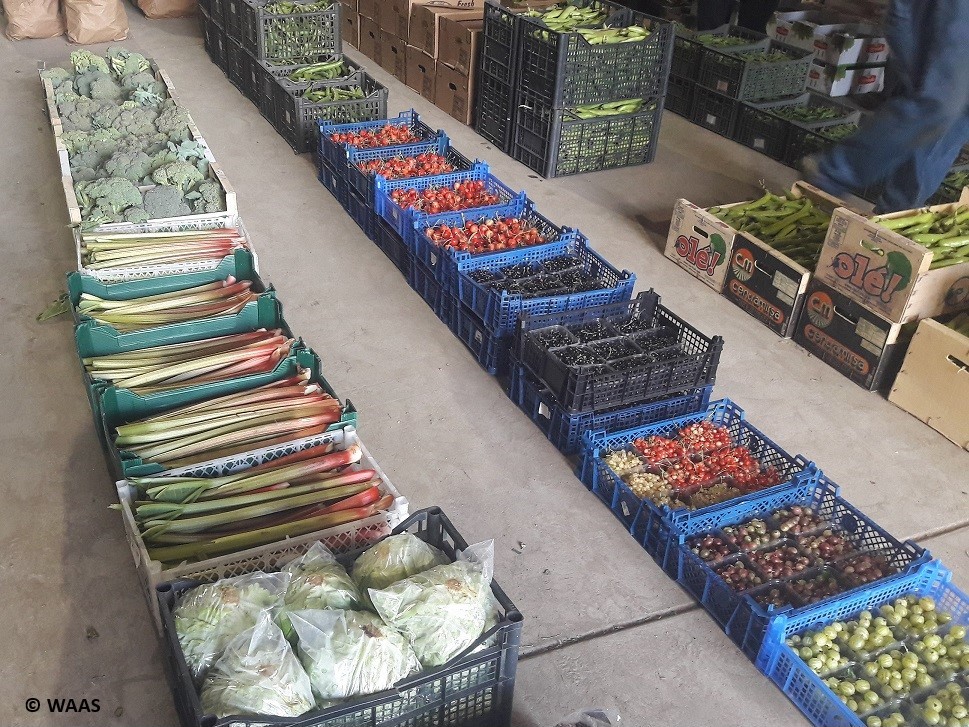This is the story of a local industry with a nationwide reach, of life on the land and of forgotten tales of helping hands. Step back to the heydays of market gardening in the Vale of Evesham.
To begin exploring the online exhibition, click on the top of a box to expand or close that section. Grown in the Vale is part of the Market Gardening Heritage project, supported by the National Lottery Heritage Fund.
Vegetables, fruit, herbs and cut flowers grown in the Vale of Evesham were sold up and down the country — from Glasgow to Covent Garden and Penzance.

Laden vehicles ready for market, 1930s
Market gardening was a key industry and way of life for many communities around Evesham and Pershore. From the late 19th to the mid-20th century, orchards and small plots packed with fruit and vegetables shaped the local landscape. Not only were families roped into helping on relatives’ grounds, but many local trades were connected to the area’s abundant production of food, from transport companies to canning factories, blacksmiths and basket makers. Unlike allotment produce, market garden crops were grown specifically for sale. Hand worked strip plots were generally 1-2 acres in size, but most full time growers rented or owned several pieces of ground totaling 5-6 acres.
Looking back, many involved in market gardening couldn’t imagine doing anything else. Despite the long hours and hard work in all weathers, as Francis says, it was ‘the best job in the world’. Here are the thoughts of Mike, Karen, Henry and Francis.
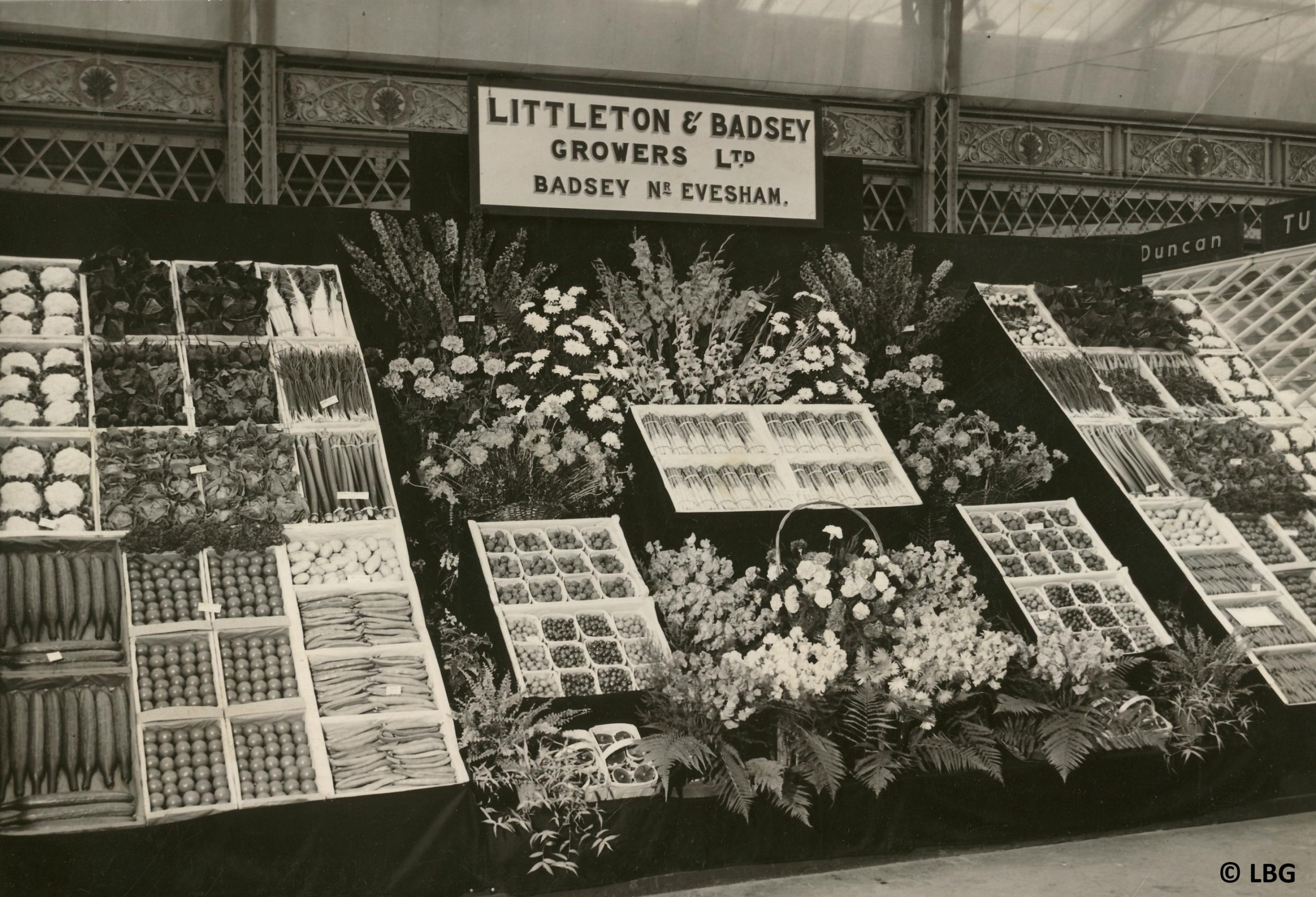
A wide variety of crops were grown on market gardens, as showcased by the Littleton & Badsey Growers’ cooperative
Asparagus to wallflowers: an A-Z of crops
Ever heard of Evesham asparagus or Pershore plums? Chances are you have, but does the Vale also conjure up images of sage, gooseberries and spring onions? Alongside the area’s most famous produce, market gardeners packed a wide range of crops on to their plots. Most were transported by rail, and later lorries, to markets and kitchens across Britain’s cities. But it was not all about food – deep red wallflowers were sometimes sold for dye and during World War I valuable supplies of medicinal herbs were grown and dried.
Grown in the Vale – Reg, Mike and Andrew paint of picture of the astonishing variety grown in the Vale of Evesham.
Taking to the Land
This poem is set in the early days of market gardening. It describes the life of a husband and wife who decide to become market gardeners, but have a lot to learn and are uncertain if they’ll be able to make enough money to live. Listen to how they get on – does their hard work pay off in the end?
‘Taking to the Land’ was written and read by local poet Brian Smith.
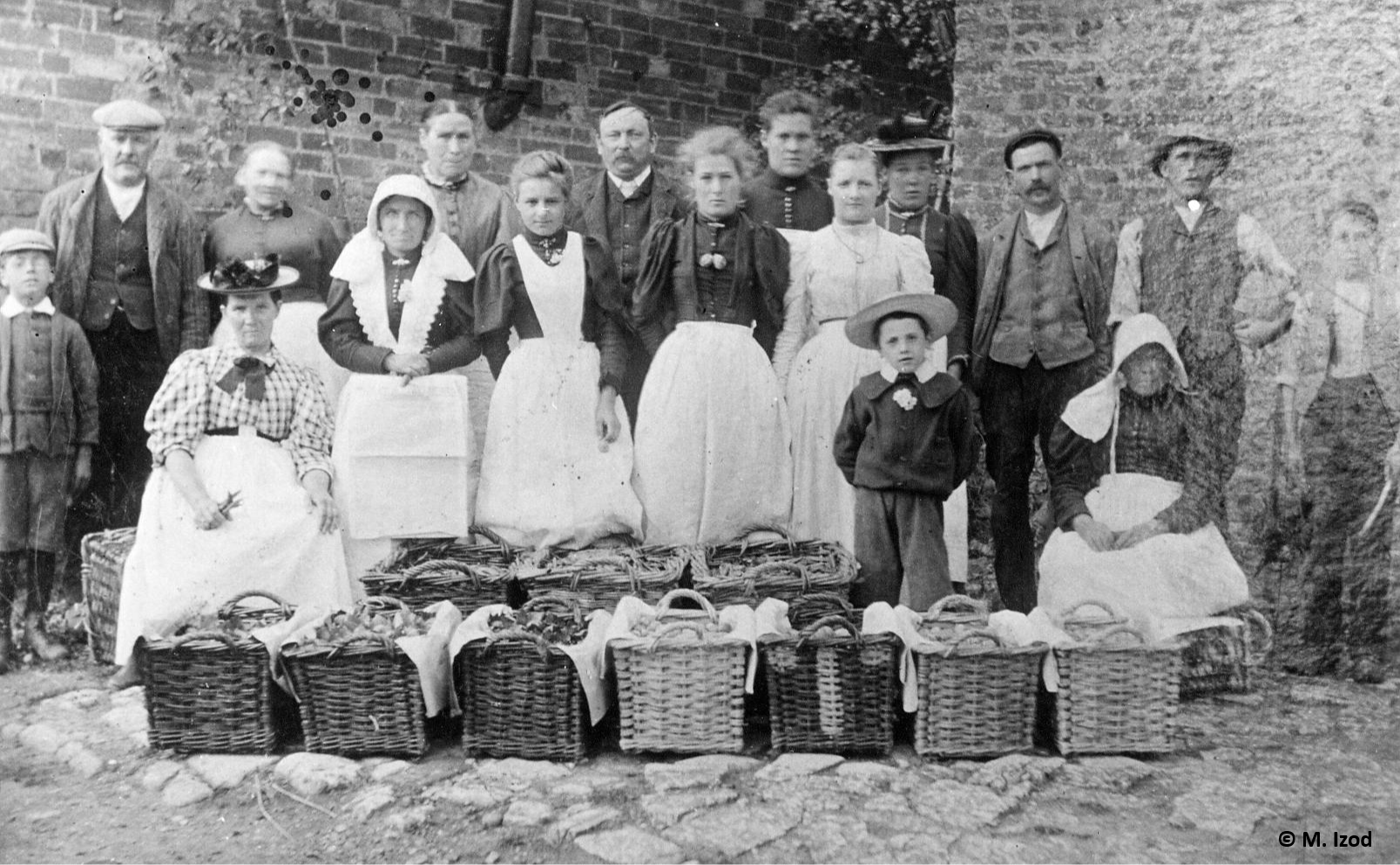
‘Drury workforce’, Fladbury – c. 1880
Market gardening started off slowly, but became the most common profession in many villages by 1910. From just a few gardeners in Evesham at the beginning of the 1800s, it eventually spread to the villages surrounding Evesham and Pershore and rapidly grew after the 1870s.
Why did it become so widespread in the Vale of Evesham? There is no one reason: alongside opportunity, there were also problems with traditional farming that encouraged workers to look for work elsewhere.
- Local soil and weather are good for growing fruit, vegetables, herbs and flowers.
- Railways connected the area to distant markets and allowed crops to be sold across Britain for the first time. The two train lines crossing the Vale opened in 1853 and 1868.
- The Evesham Custom was a set of rules that landowners and market gardeners agreed to stick to. It provided growers with compensation for their investments, such as planting fruit trees and other long term crops, if the landowner no longer wanted them on the land and helped successful gardeners to rent the best land.
- Problems with traditional farming led many former farm workers to become market gardeners. Falling grain prices led to a nationwide agricultural depression in the 1870s and farm workers began to seek work elsewhere.
Use the side arrows to scroll left and right, or hover over an image to pause.
Fruit and veg picked in the Vale of Evesham one day could be sold in Glasgow, Southampton or London the next. Growers primarily sold through local auctions or wholesale markets in towns across the country. However, some sold direct to greengrocers and local jam or canning factories.
We’ve collected many memories of the efficient system of collecting fruit and veg from the growers, and transporting around the country, via road and rail. Here are Mike, Francis, David and Henry.
Growers worked hard, often 6 or 7 days a week, to earn enough to support their families. Whilst most of those in charge of market gardens were local men, they didn’t work alone – here are the often forgotten tales of helping hands.
Women
Planting, picking and packing crops alongside running a household and caring for children was the life of many growers’ wives. Most worked on their family’s land, whilst others were hired by larger growers as harvest hands and a few ran their own market gardens.
Due to the unpaid or part time nature of many women’s work, it went unrecorded or disguised behind the job description ‘domestic duties’, which fills historic census records. However, there are photographs and wage records kept by Oxstalls Farm in Evesham, a large market garden, that do tell us a bit about the women who worked for them during the busy harvest season.
Historic records of women working on market gardens – open link to read copies of the documents shown below.
Use the side arrows to scroll left and right, or hover over an image to pause.
Children
Family members provided essential help and children were no exception, with many spending evenings, weekends and school holidays helping on the land. From early mornings picking frozen sprouts to holiday earnings and playing in the fresh air, it was outdoor freedom for some and repetitive hard work for others.
Listen to Karen, Francis, Reg and Bob’s memories of growing up and how they found a childhood on the land.
Incredibly, a series of letters from 1933 by school children in Pershore and Badsey have survived. Scroll through sections below, or read some of the Pershore letters in full. There was no lazing around! Long days tying onions or picking fruit are the tasks most often mentioned, so it’s no surprise that mealtimes – all four of them (breakfast c. 6.30am, lunch at 9.30am, dinner at noon and tea c. 6pm) – feature so often.
Use the side arrows to scroll left and right through extracts of the 1933 letters.
Workers from beyond the Vale
Not everyone who worked in market gardening grew up locally. Travelling workers arrived in the area each harvest season and some growers moved permanently to the Vale of Evesham from elsewhere in Britain or Europe. From the introduction of glasshouses in the 1930s by JC Eeuwens, a Dutch grower based in Offenham, to the Italian families who built up large market gardens after World War II, market gardening in the Vale has never been an entirely British affair.
There are very few records of the Gypsy and Traveller communities who worked in the area, despite many larger market gardens relying on their help at harvest times. Groups of families would stay in the Vale for several weeks picking plums in the summer or sprouts in the winter, then move on to the next place in need of labour.
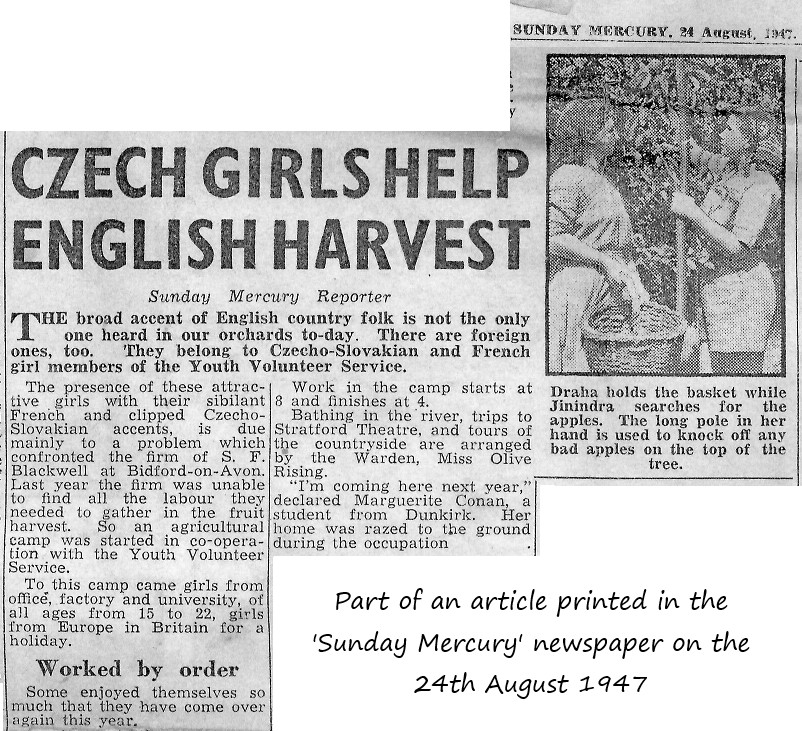
A little known story comes from 1947, when post-war Britain was struggling with labour storages. After a Bidford-upon-Avon grower was unable to find enough hands to pick the fruit harvest, an agricultural camp was set up with the Youth Volunteer Service. For the few years following 1945, young people from across Europe came to Bidford during the harvest for a working holiday.
Use the side arrows to scroll left and right, or hover over an image to pause.
Tools of the trade
Asparagus knives and sprout net holders – not your standard fare. Having the right tools for the job is always important, and market gardening was no exception. The difficulty was that the specialist tools needed didn’t always exist. As the industry grew, local blacksmiths and growers invented or adapted the tools they needed: two tine forks to cope with heavy clay soils, hoes with interchangeable heads, sprout net holders and asparagus knives, to name a few. Most villages historically had their own blacksmith – the last to close was in Badsey, where three generations of the Caswell family were blacksmiths. Being the last makers of asparagus knives, Caswell’s received orders from as far away as New Zealand for this specialist tool.
Jam & canning factories
Bottling and canning were valuable ways of preserving soft fruit. Due to the vast quantities of produce, especially plums, grown in the Vale many factories were set up in the area – Smedley’s and Beach’s in Evesham were two of the biggest names, along with Phipp’s in Wyre Piddle and the Pomona Jam Factory in Pershore.
Gladys recalls her time at Beach’s jam factory in the 1940s, including how dangerous it could be.
Click on the coloured dots to find out more about each factory.
For most people, life changed a lot during the World Wars. How did market gardening change? What was it like to live in the Vale of Evesham during the wars? Explore photographs from the time and local memories.
World War I (1914-1918)
German prisoners at Broad Marston camp, east of Evesham
Use the side arrows to scroll left and right, or hover over an image to pause.
Many thanks to Chipping Campden History Society for kindly giving us permission to share their research and Jesse Taylor’s photographs.
Prisoners of war
With many farm workers away and serving on the frontlines, it was decided that some German prisoners of war would help farmers and market gardeners. Starting in 1917, over 400 German POWs were sent to the Evesham area. News reports noted their peaceful arrival in the Vale but reveal divided views among local communities about enemy soldiers living in their midst.
Medicinal herbs
To alleviate a shortage, market gardeners were asked by the wartime government to grow plants used in several key medicines. By 1917, market gardeners in Badsey, Bretforton, Offenham and the Littletons were growing belladonna (to treat poisonings), henbane and stramonium (for stomach problems). Drying these plants to turn into medicine turned out to be tricky, so a special drying shed was built to make this easier.
The help of local growers made a big difference: by the end of the war the Evesham area was growing 1/4 of Britain’s henbane and 1/5 of the country’s belladonna.
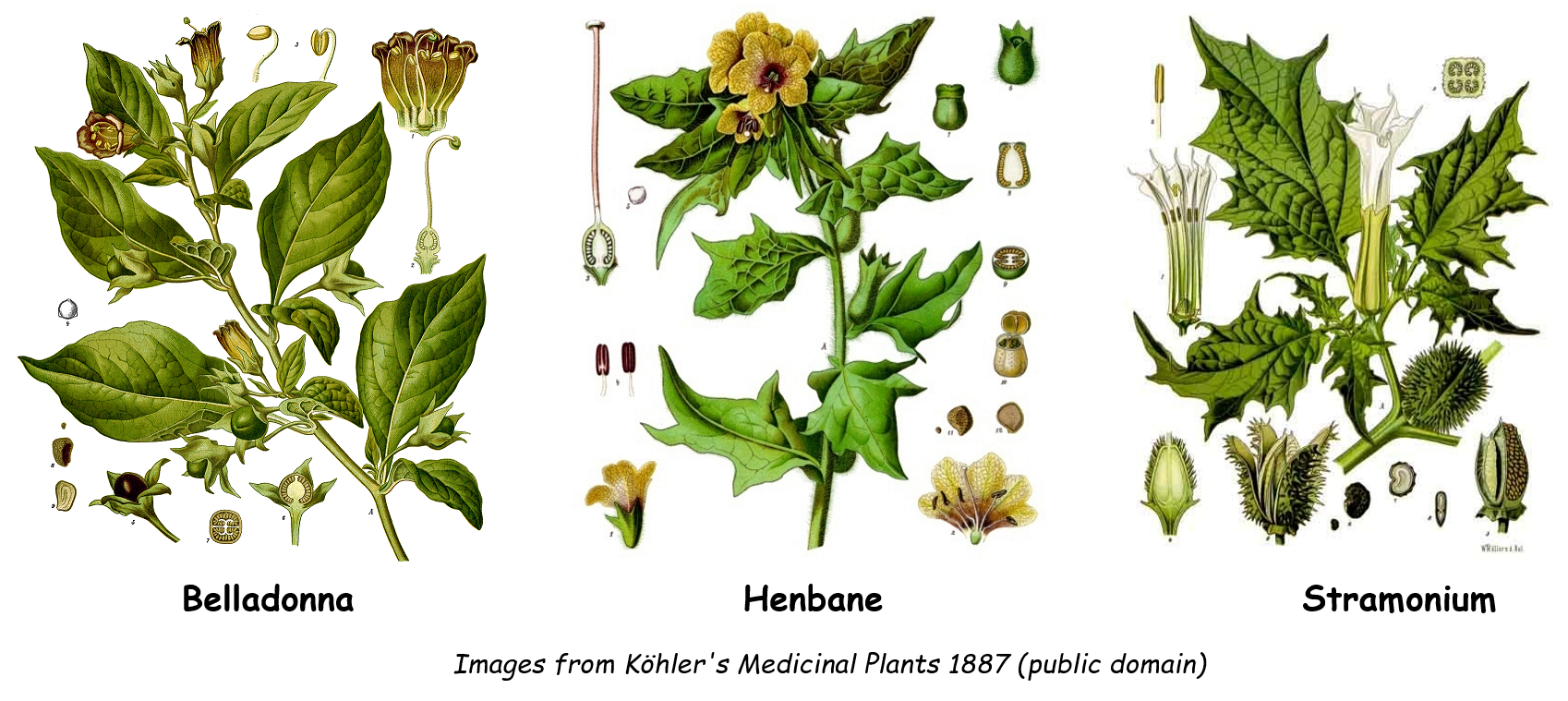
World War II (1939-1945)
Food production was essential work, but market gardening still witnessed significant changes during World War II: ‘luxury’ crops such as strawberries and asparagus were restricted, there was a labour shortage, fuel and fertilisers were rationed and other equipment became in short supply. Despite difficulties, the high demand for food during WWII meant that it was a boom time for many market gardeners.
Wartime restrictions were in place, but some market gardeners found ways of getting around the rules, as Henry explains.
Women’s Land Army
The Women’s Land Army were vital to keeping the nation fed and over 200,000 women enrolled from 1939-50. Many came from the cities to help fill rural labour shortages, including to farms and market gardens across the Vale of Evesham. Hard manual work in all weathers was challenging, but the companionship and camaraderie of the Land Army made it an enjoyable time for some. Small groups of land girls were stationed in several local villages, including Wickhamford, Harvington, Charlton and Great Comberton.
Land girls working around Fladbury
Use the side arrows to scroll left and right, or hover over an image to pause.
Prisoners of war
As World War II continued, Prisoner of War (POW) camps across Britain grew, including several in and around the Vale – such as those at South Littleton, Chipping Campden and Ettington Park. Despite initial reluctance, it was decided that Italian and most German POWs could work on the land. Nearly 40,000 Italians and 70,000 Germans worked on British farms and market gardens during the war.
Whilst there was inevitable hostility and mistrust, there are also stories of lasting friendships and marriages between POWs and locals. The repatriation of German troops took several years and, when camps finally closed in 1948, 25,000 Germans chose to stay in Britain, including some in the Vale.
The world doesn’t stand still for long. By the 1970s and ‘80s traditional market gardening was in decline, but growing fresh food for sale has not left the Vale.
Digging, planting, weeding and harvesting was traditionally done by hand. It was slow and hard work. Over time, new machinery was invented and some growers began to use small tractors and other motor powered tools. However, machines are most efficient at scale and by the 1950s and 1960s market gardens, cramped with a wide variety of crops, started to become less profitable.
Use the side arrows to scroll left and right, or hover over an image to pause.
Changing times, changing tastes
World War II shaped the British population and, in turn, the foods grown locally and eaten across the nation. German and Italian ex-prisoners of war who stayed or returned to the Vale of Evesham as market gardeners introduced different crops, such as peppers, aubergines and courgettes. Demand for certain foods – such as thyme, which is frequently used in Caribbean cooking – also changed as communities from around the world arrived to help rebuild post-war Britain.
Local growers adapted what they grew as both the times and people’s tastes changed. Listen to David, Karen and Geoff discussing the rising and falling demand for certain foods in the 1960s and 1970s.
Today, there are very few market gardeners left in the Vale of Evesham. Why? There are numerous reasons, from the creation of supermarkets and arrival of cheap imports, to mechanisation and switch from seasonal to year-round produce.
Henry, Karen, David and Geoff, whose families worked in market gardening, share their thoughts on the decline of traditional Vale growing.
Gone forever? Traditional market gardens have almost entirely disappeared, but fresh food is still grown for market in the Vale of Evesham. Glasshouses in Offenham and Fladbury continue to grow tomatoes and salad leaves, whilst a strawberry farm in Bretforton has won national awards and flowers are grown for confetti just outside Pershore.
Voices of Evesham past
Listen to extra stories, poems and the distinctive local dialect of the Vale’s past by clicking on the + buttons in the hovel above.
‘Hovel’ is a local name, used around Evesham and Pershore, for a market gardener’s shed. Many growers had a hovel on their land for storing tools and providing shelter, but hovels were also social hubs, home breweries and, in one case, a pop-up barbers!
Acknowledgements
This exhibition has been created as part of the Market Gardening Heritage project (2018-21) by Worcestershire Archive & Archaeology Service and partners, with funding from the National Lottery Heritage Fund. Many thanks to everyone who shared their memories, family photographs and knowledge, as well as the volunteers who made this project possible.

